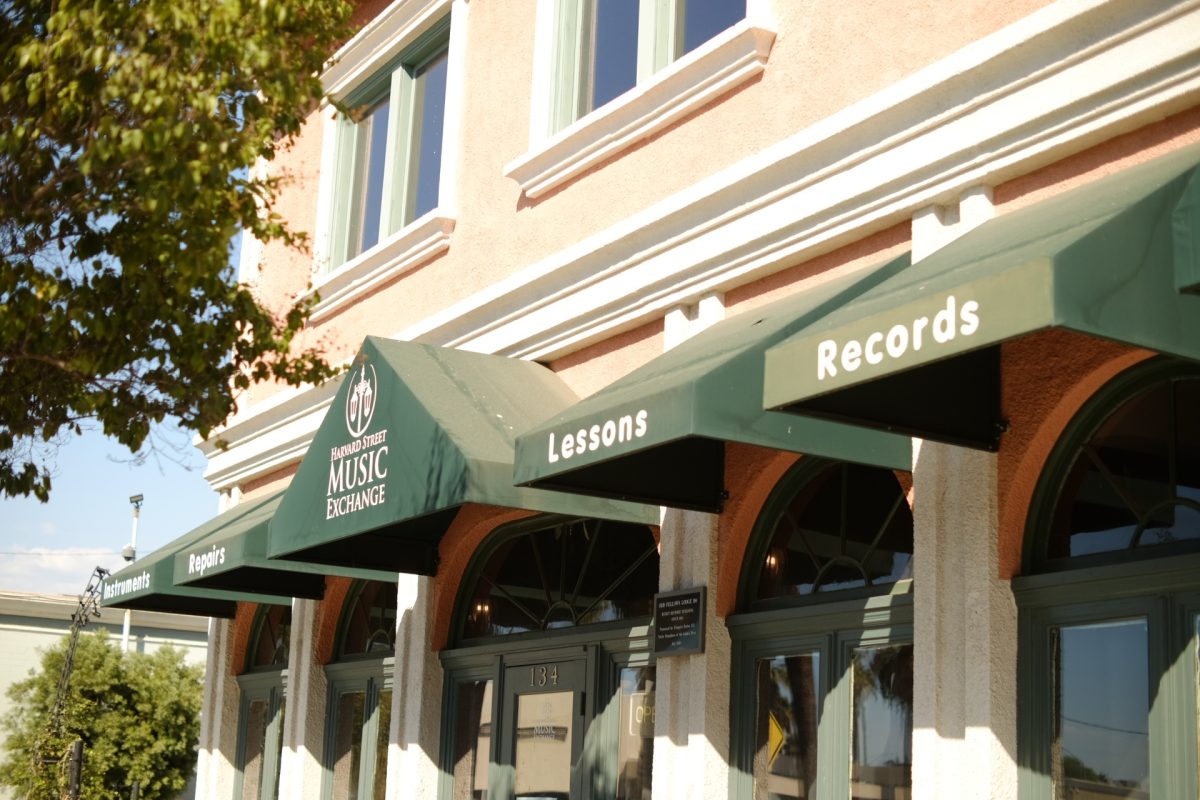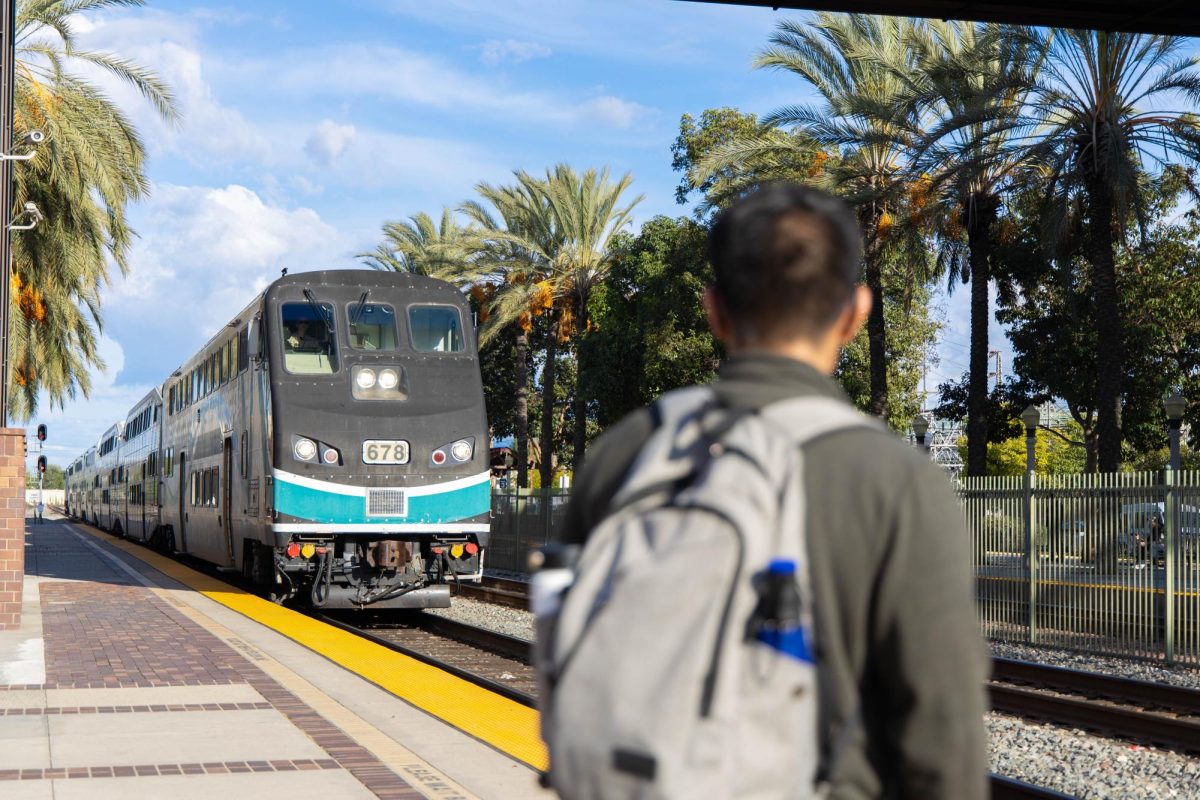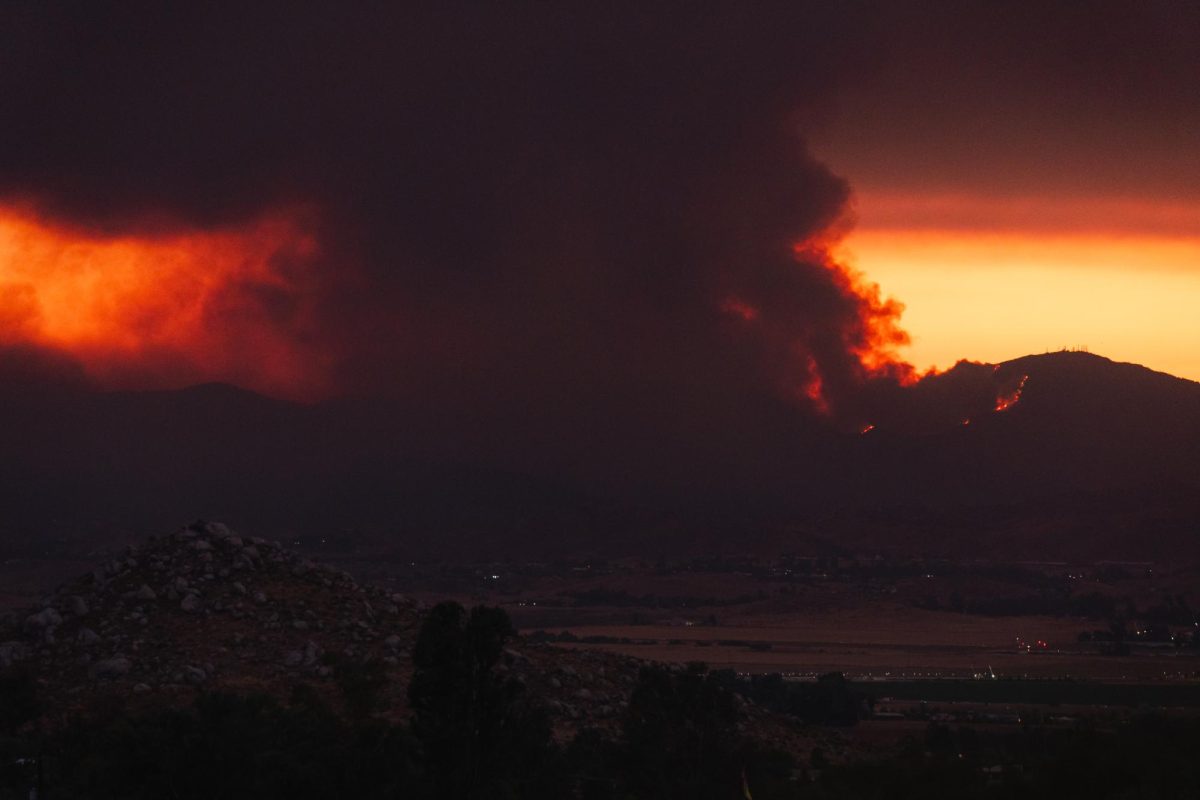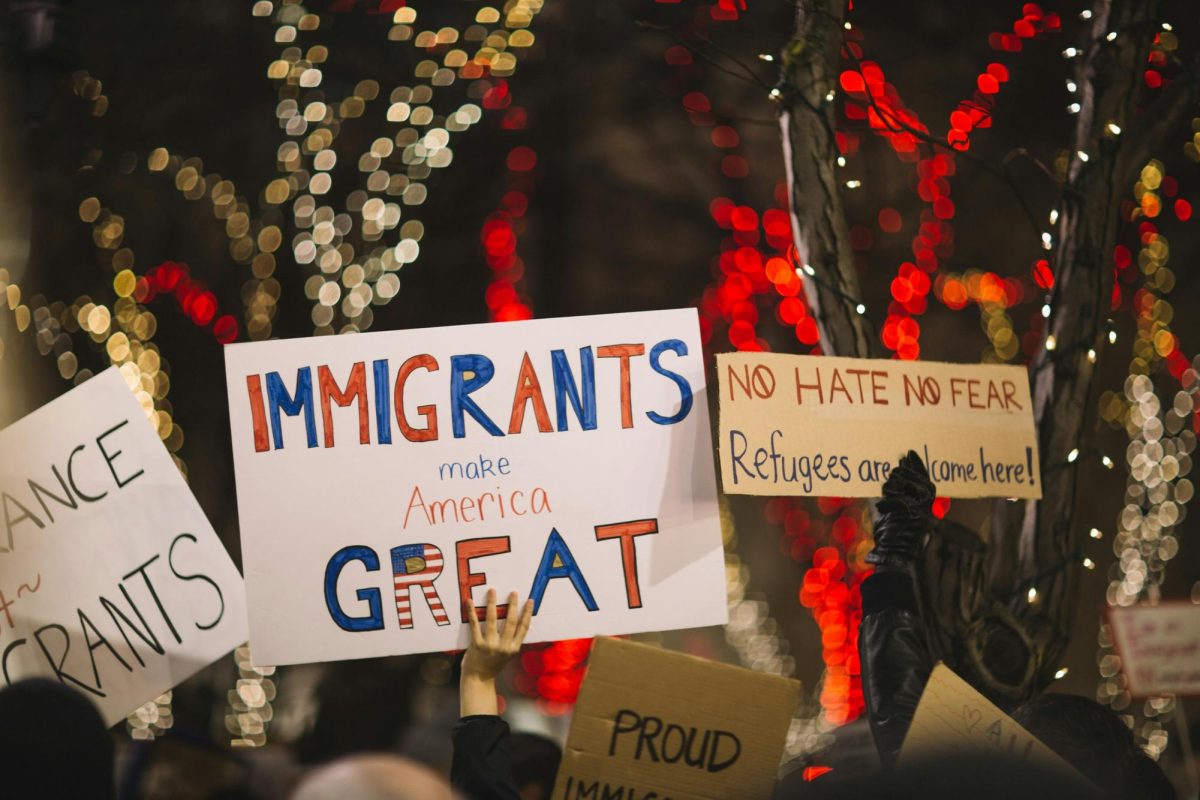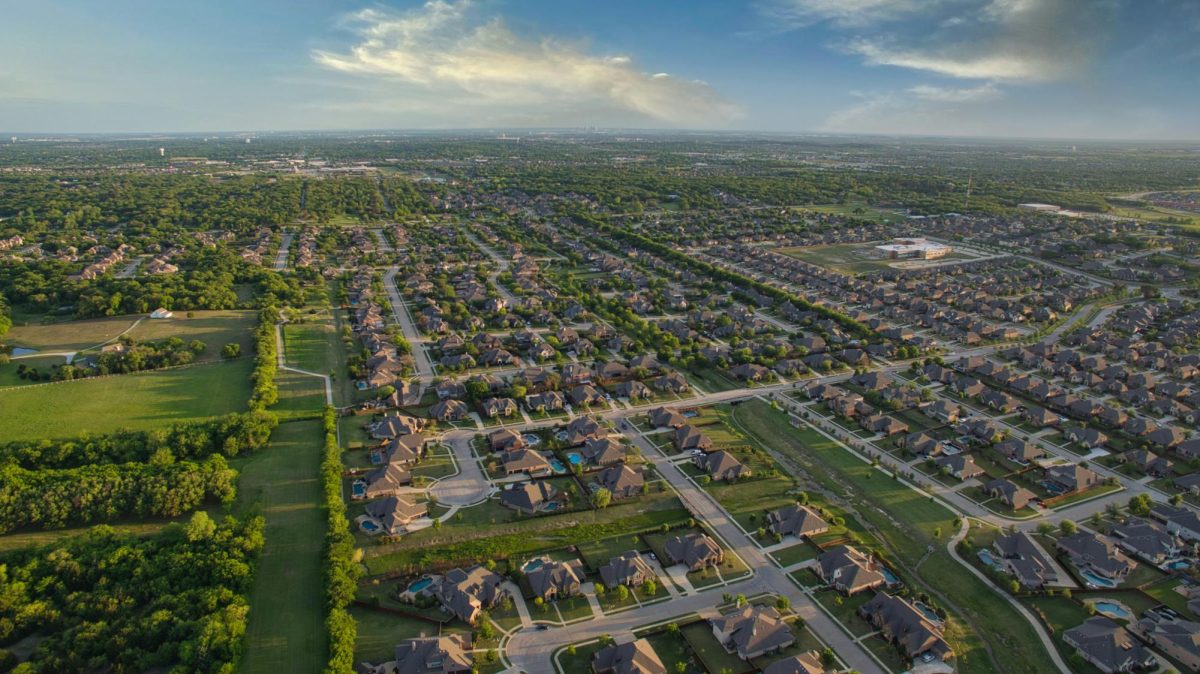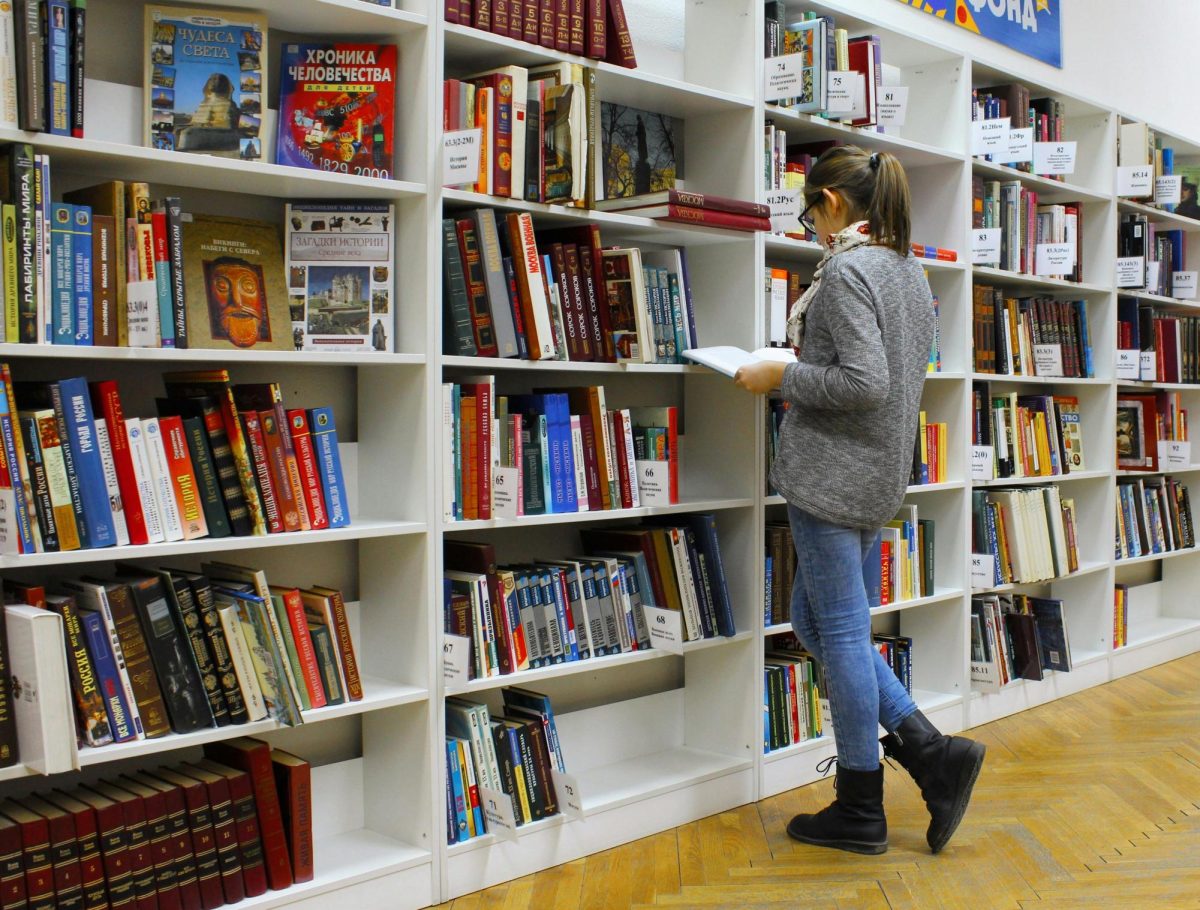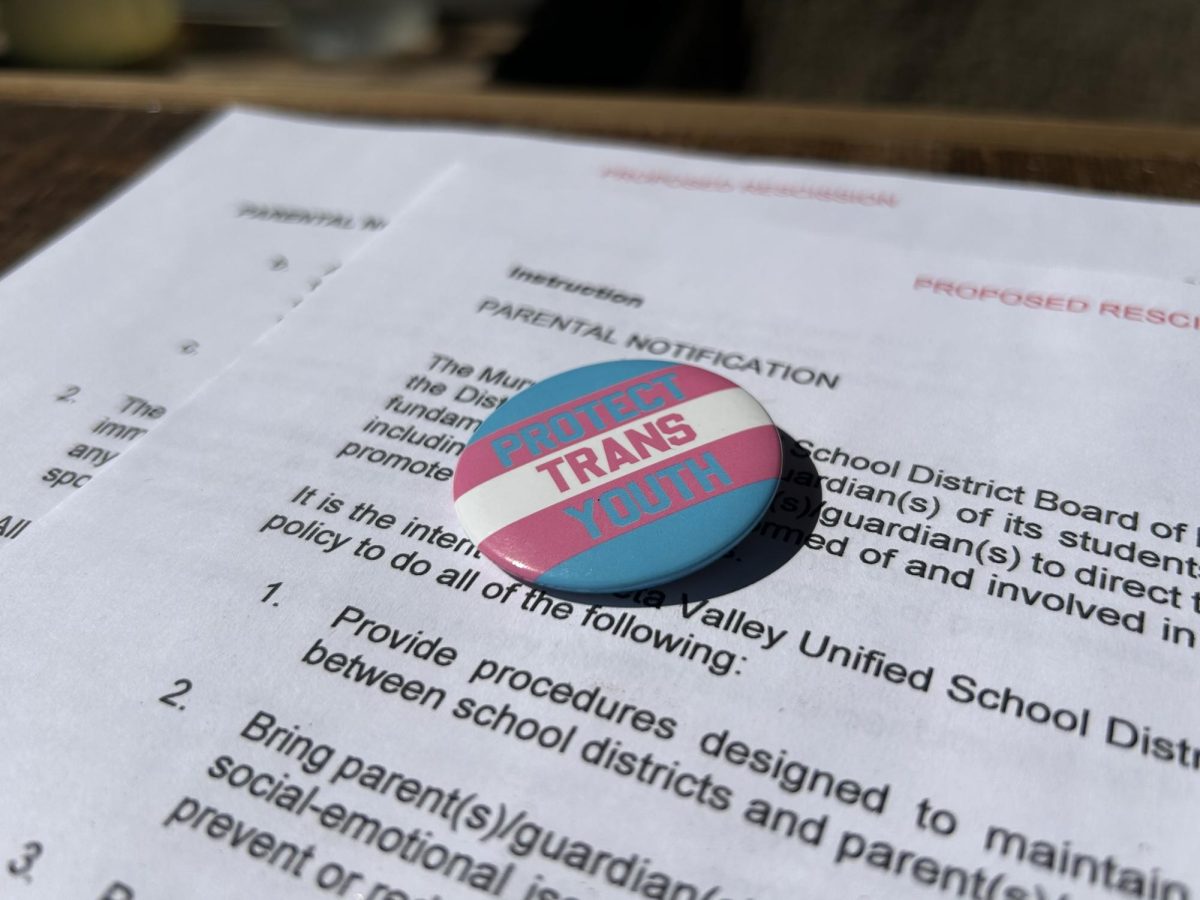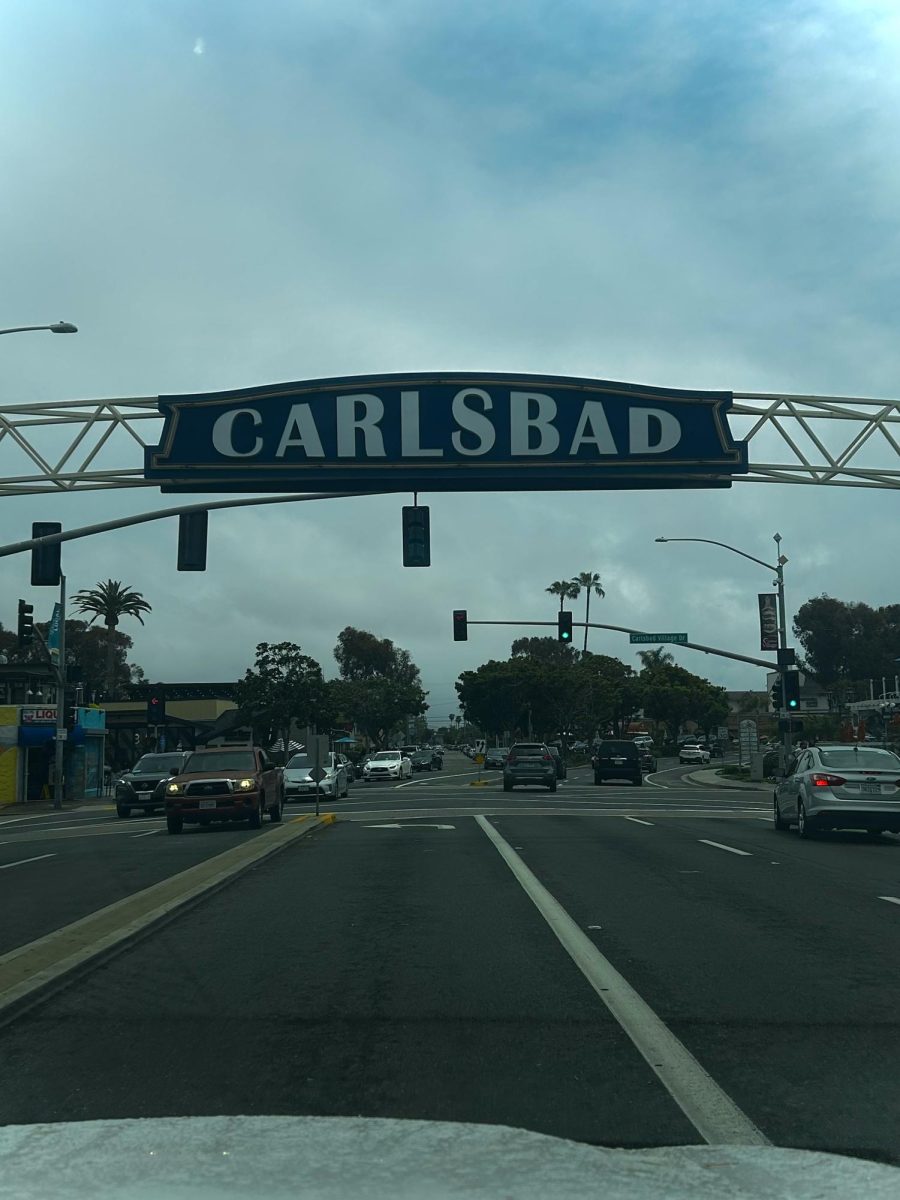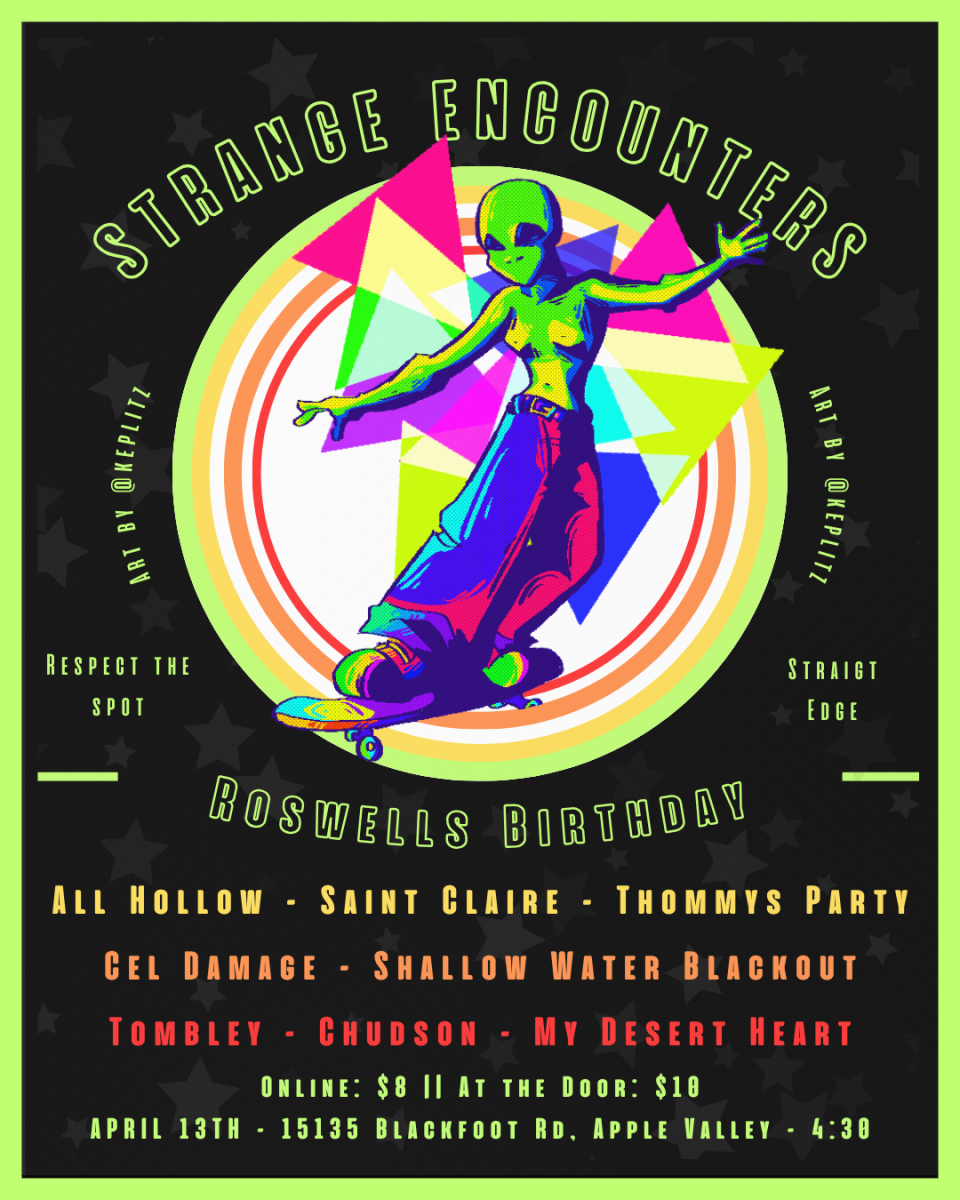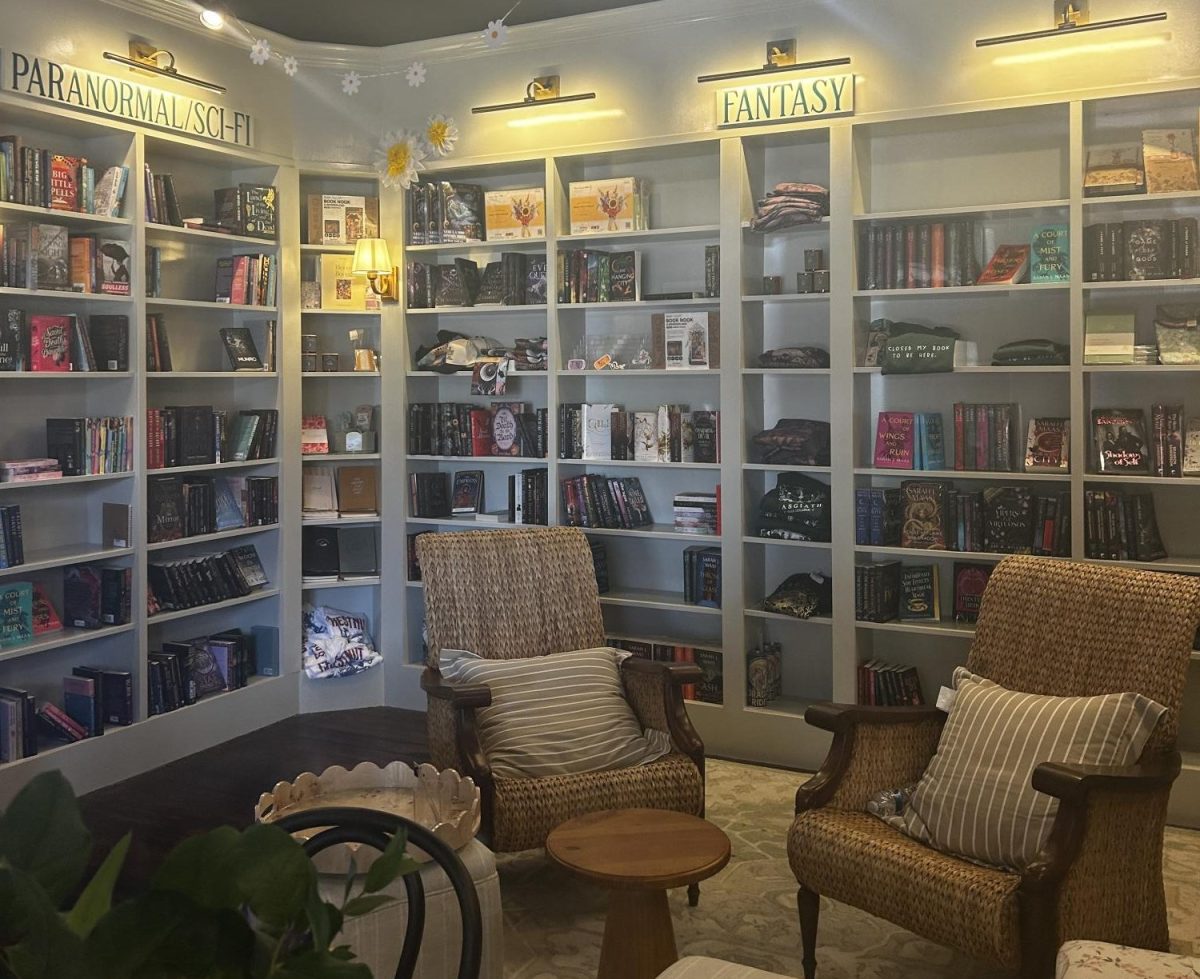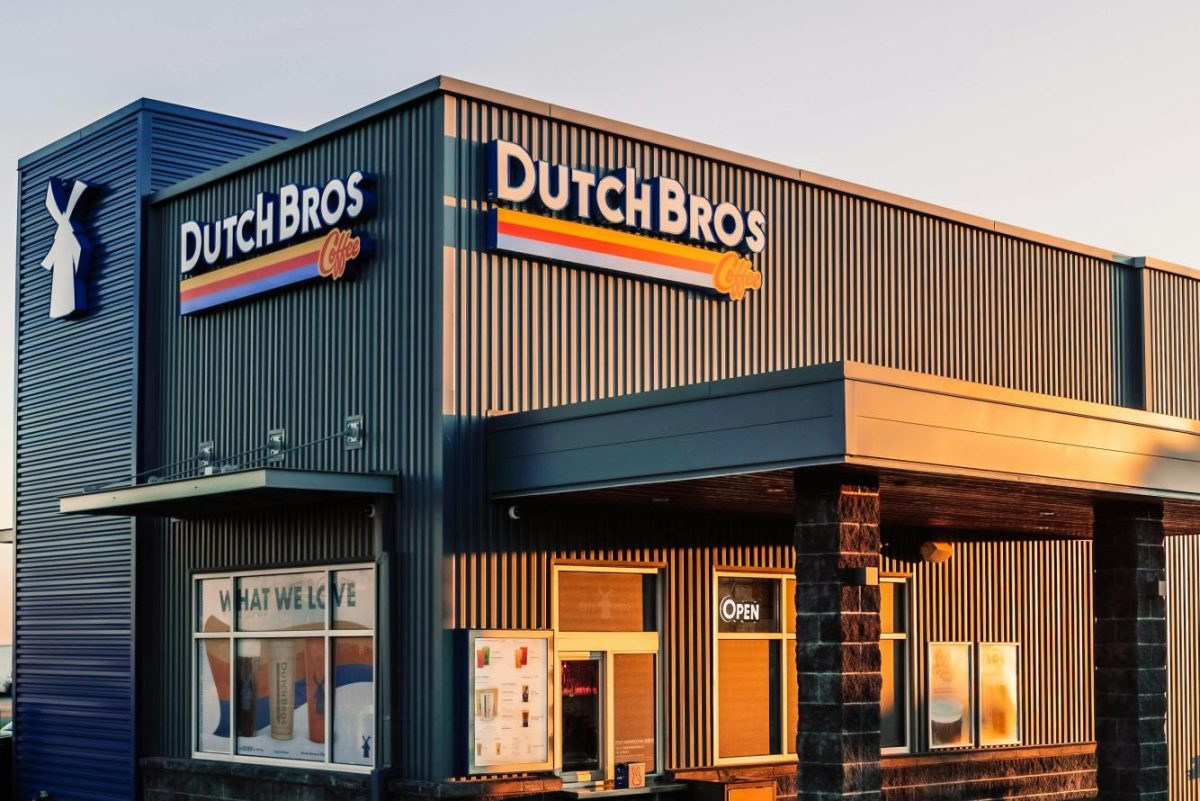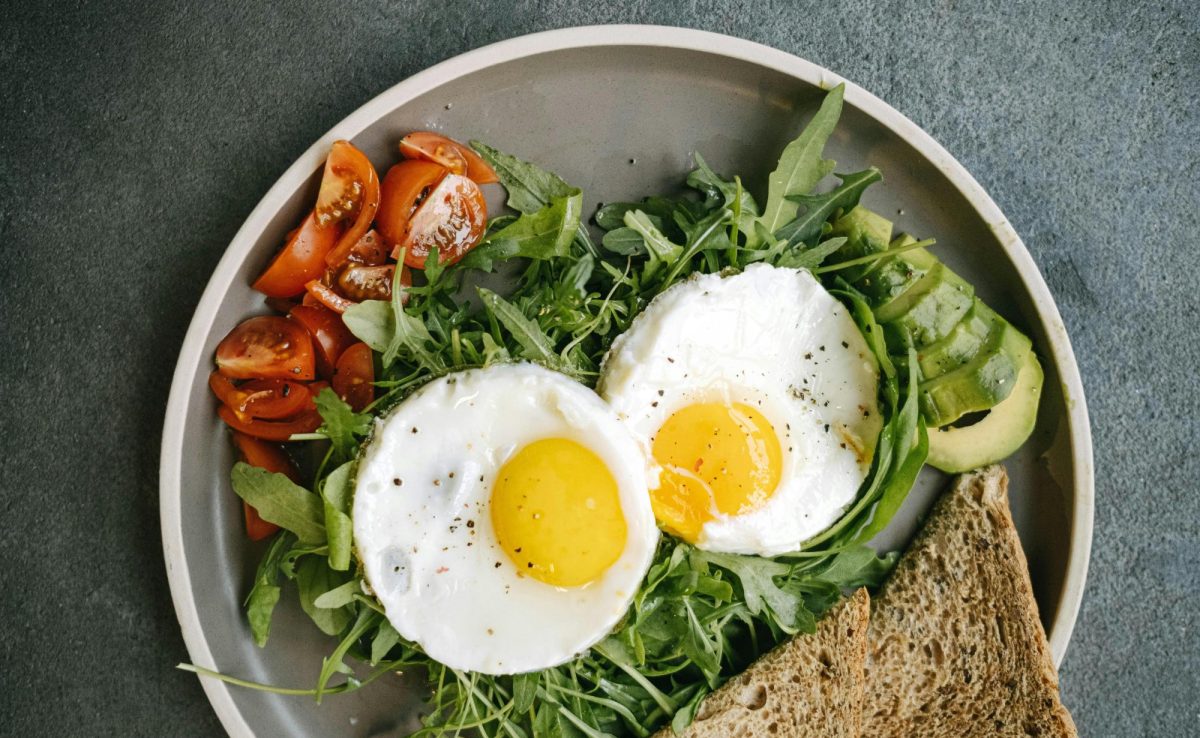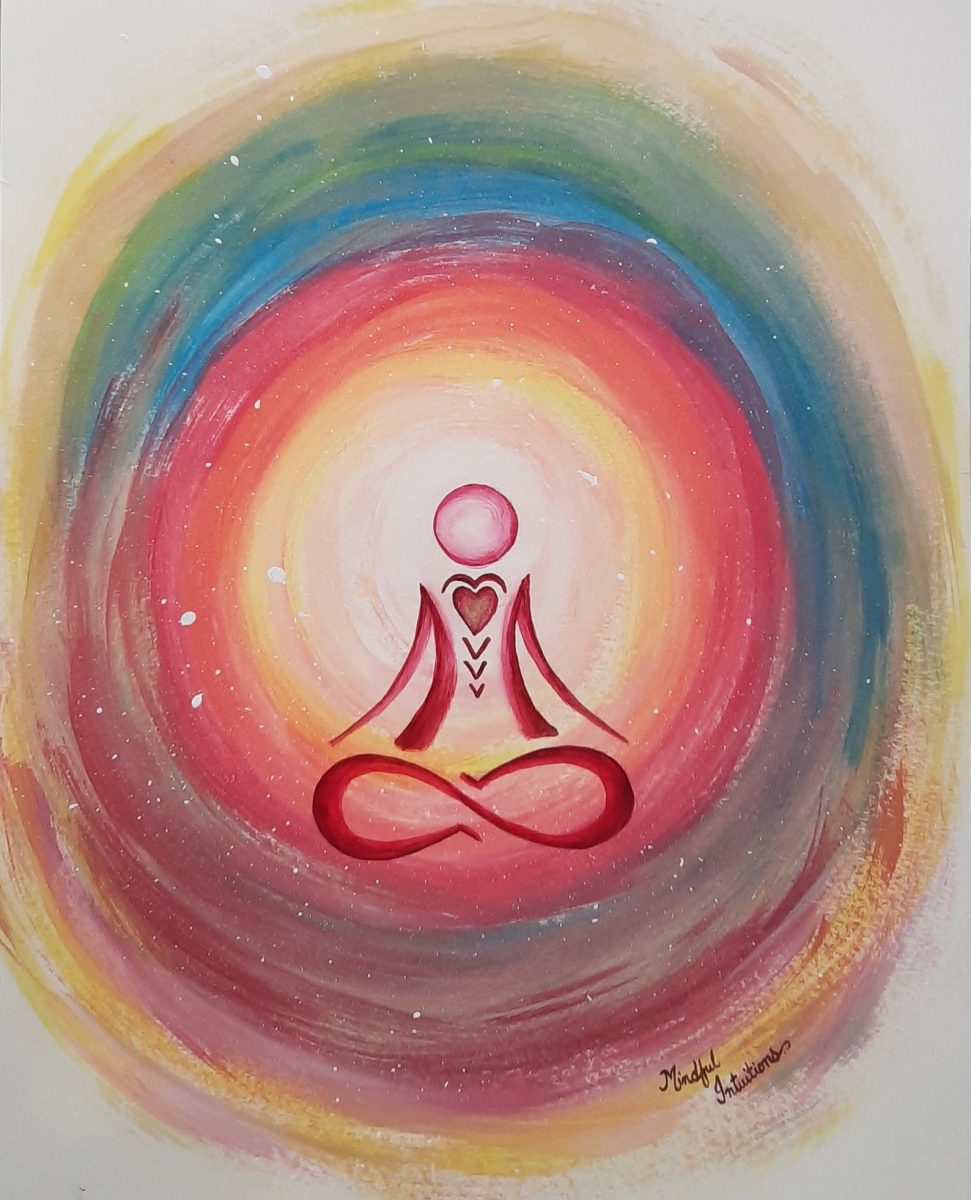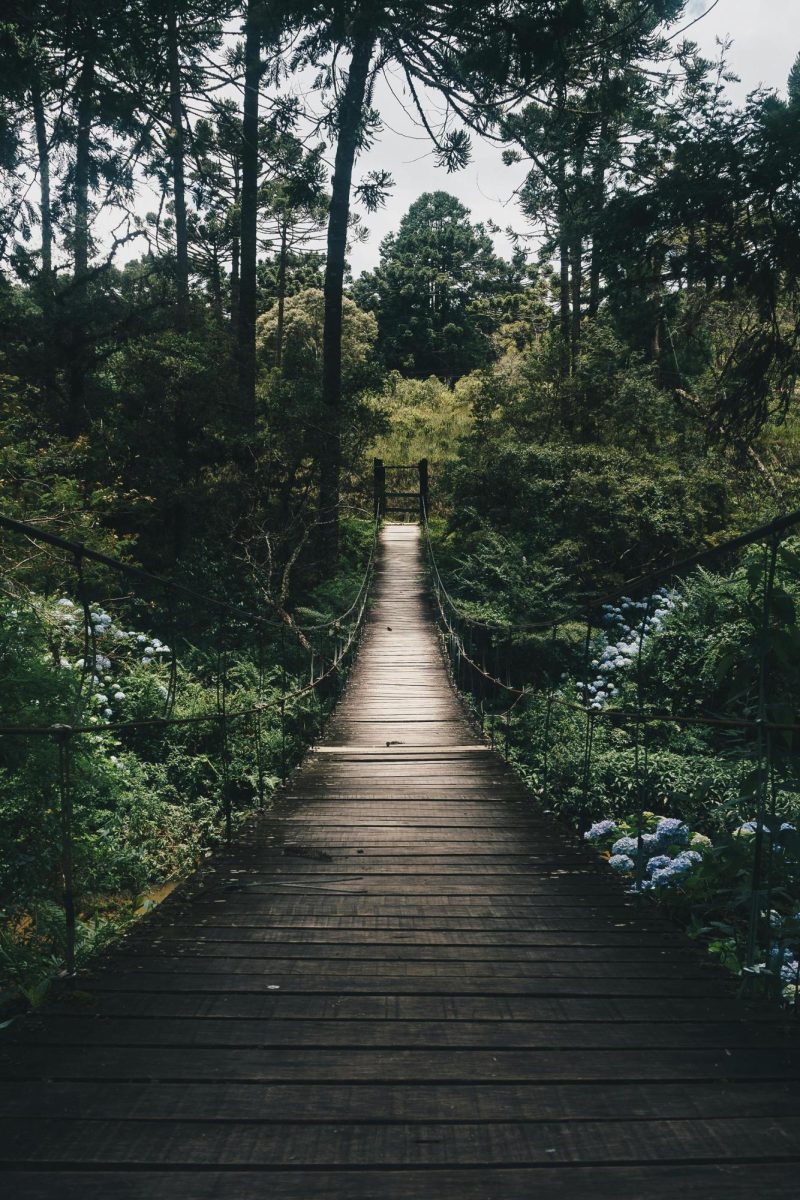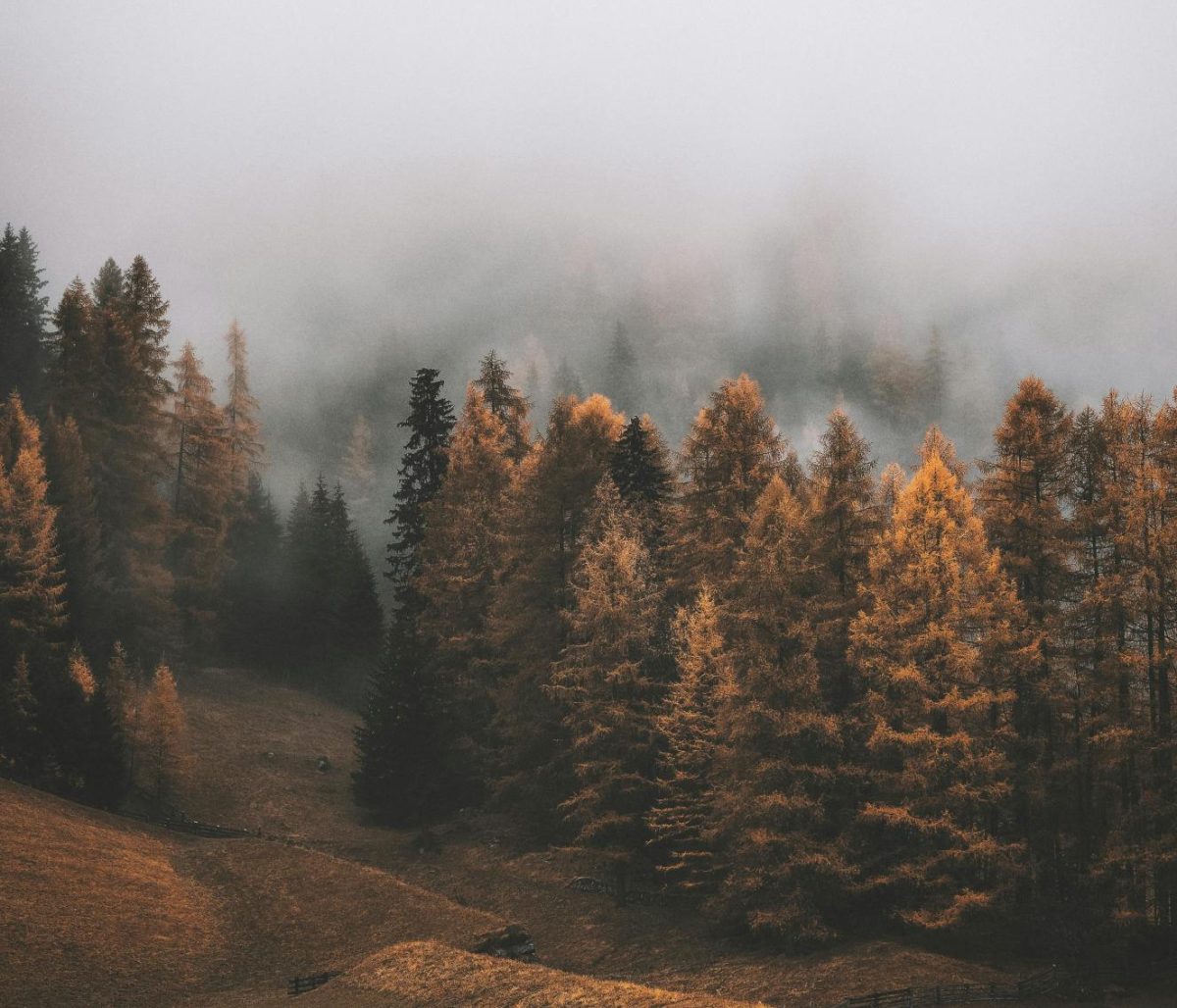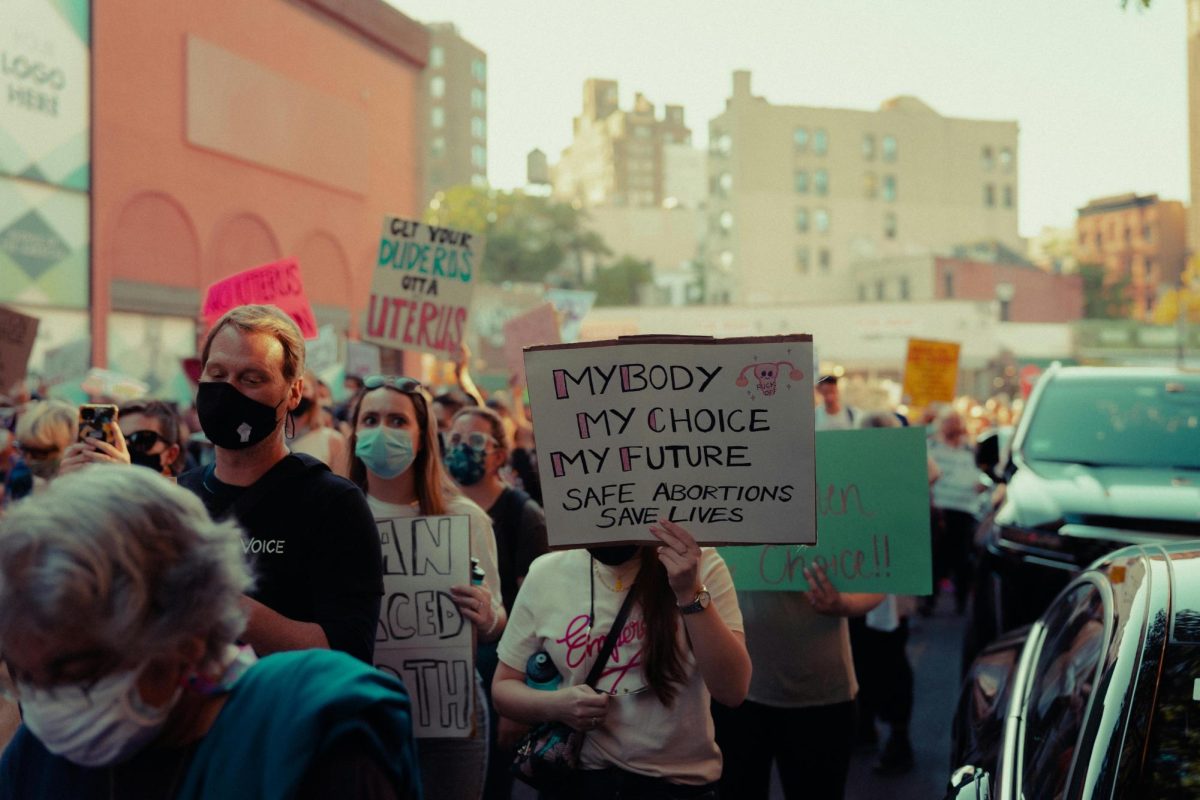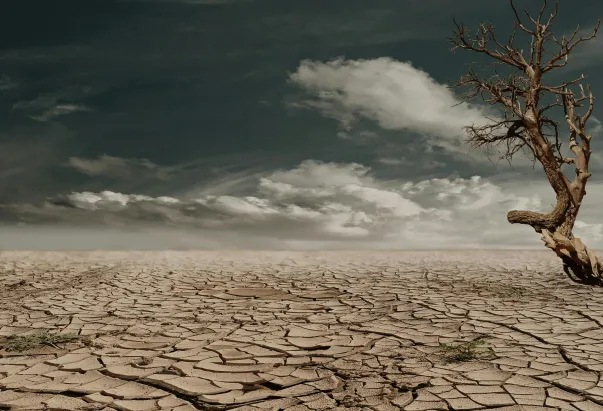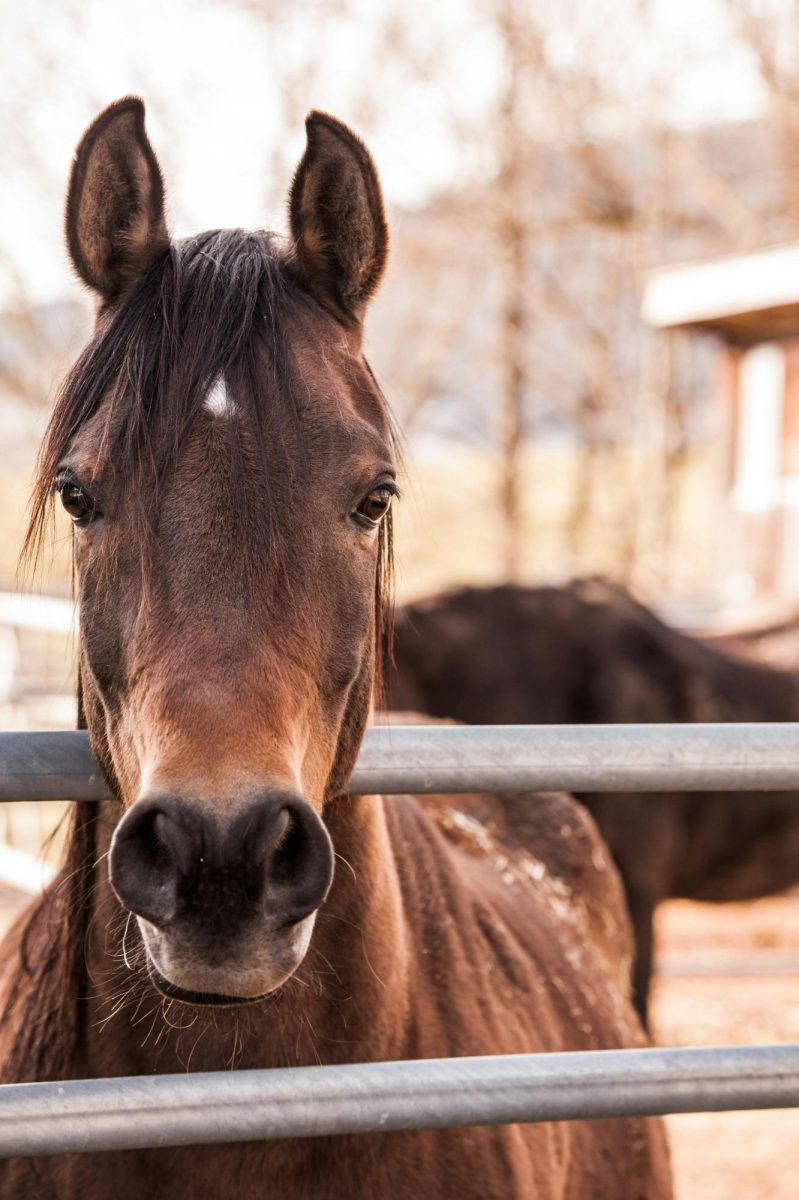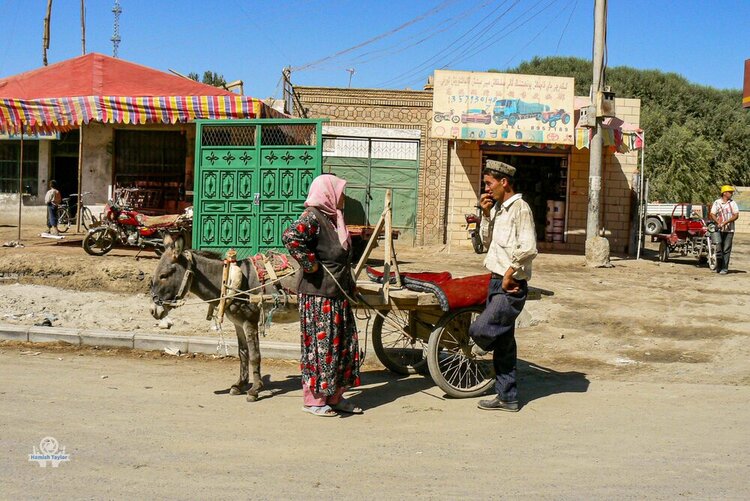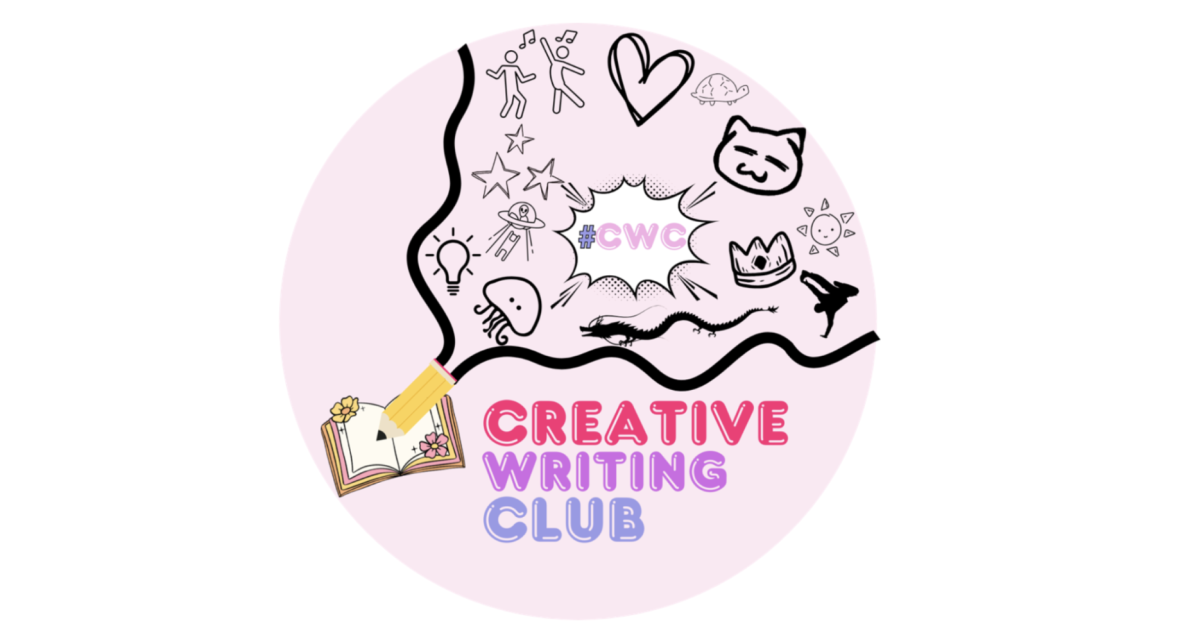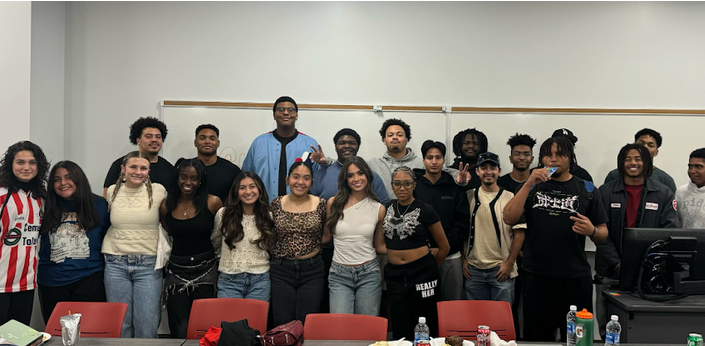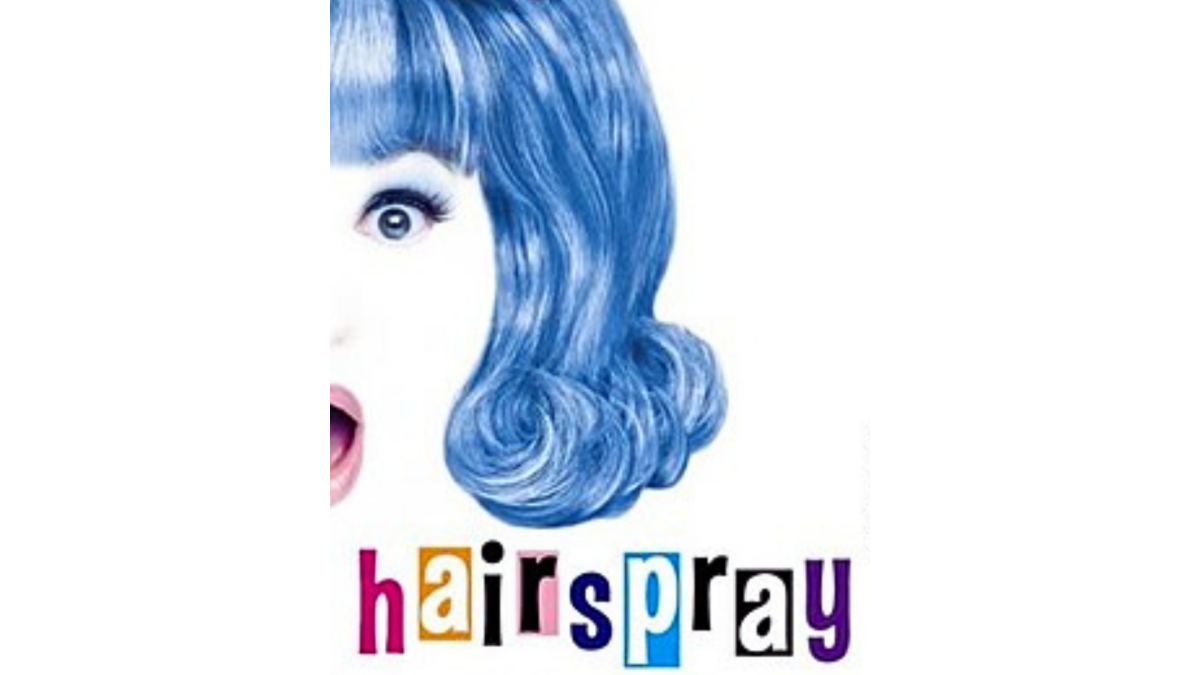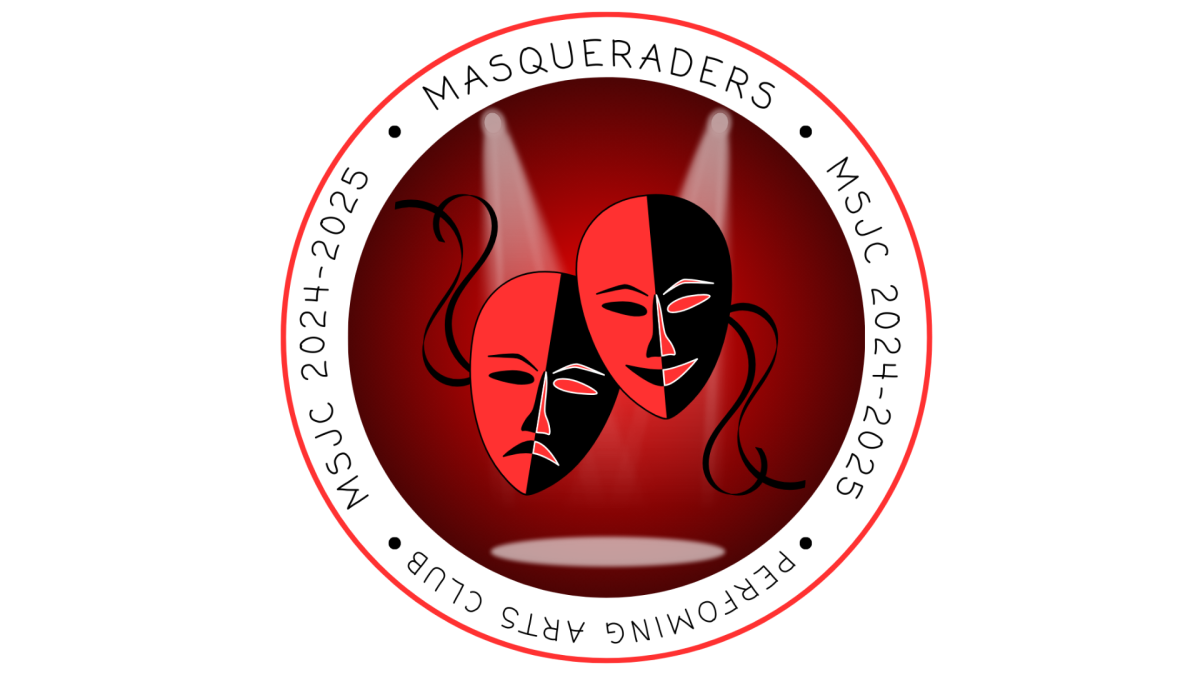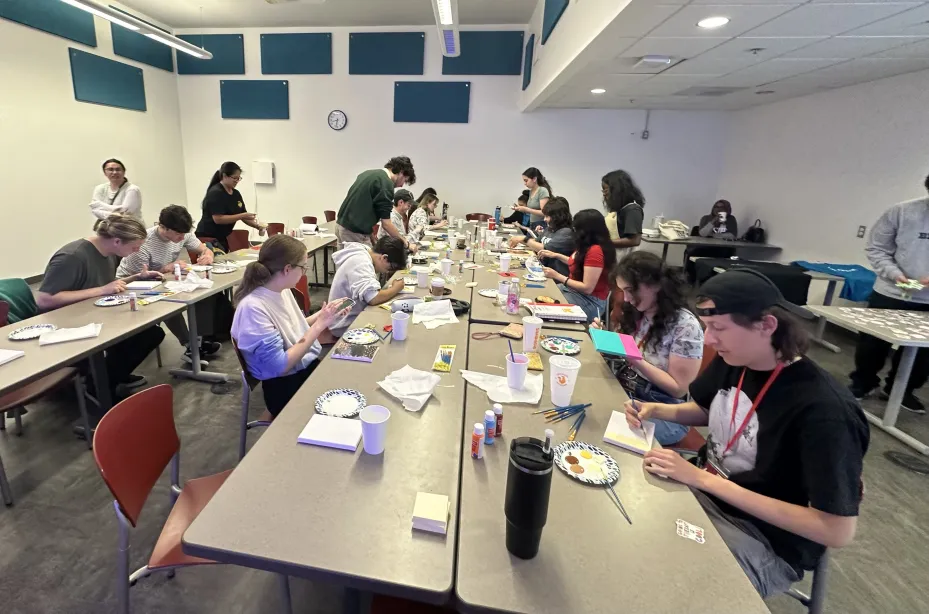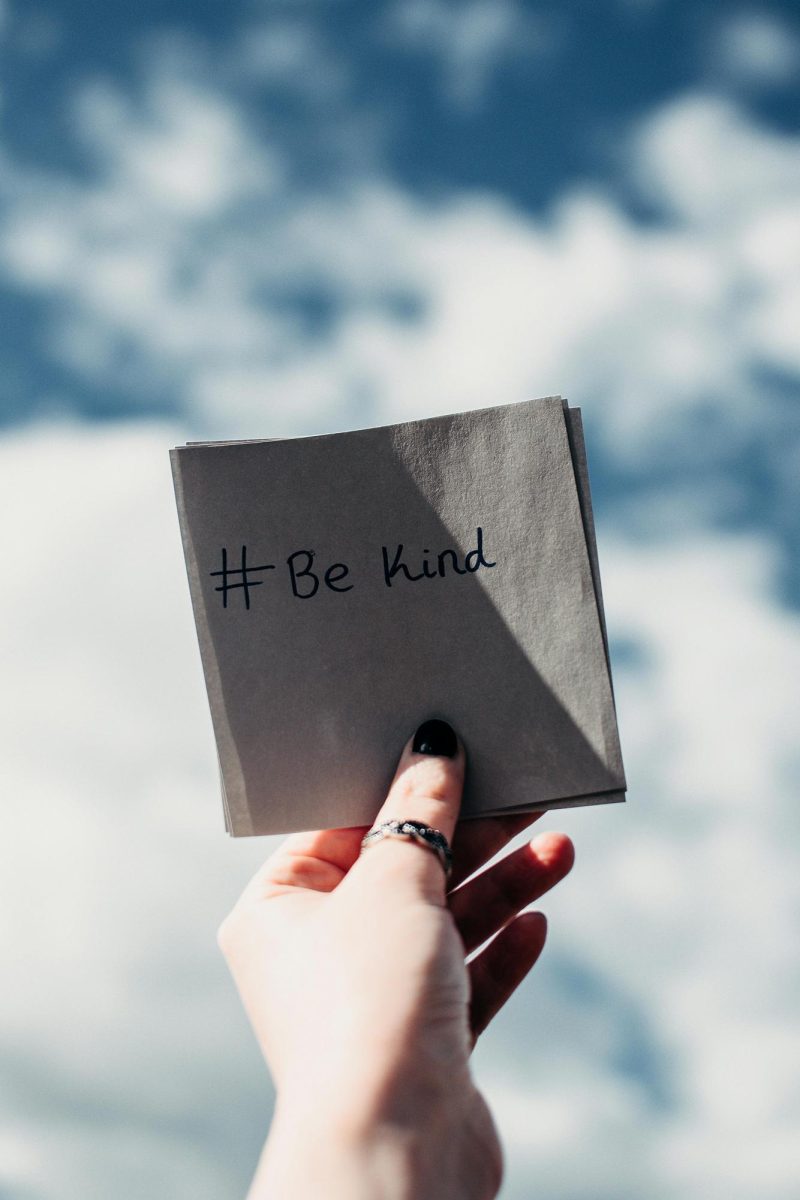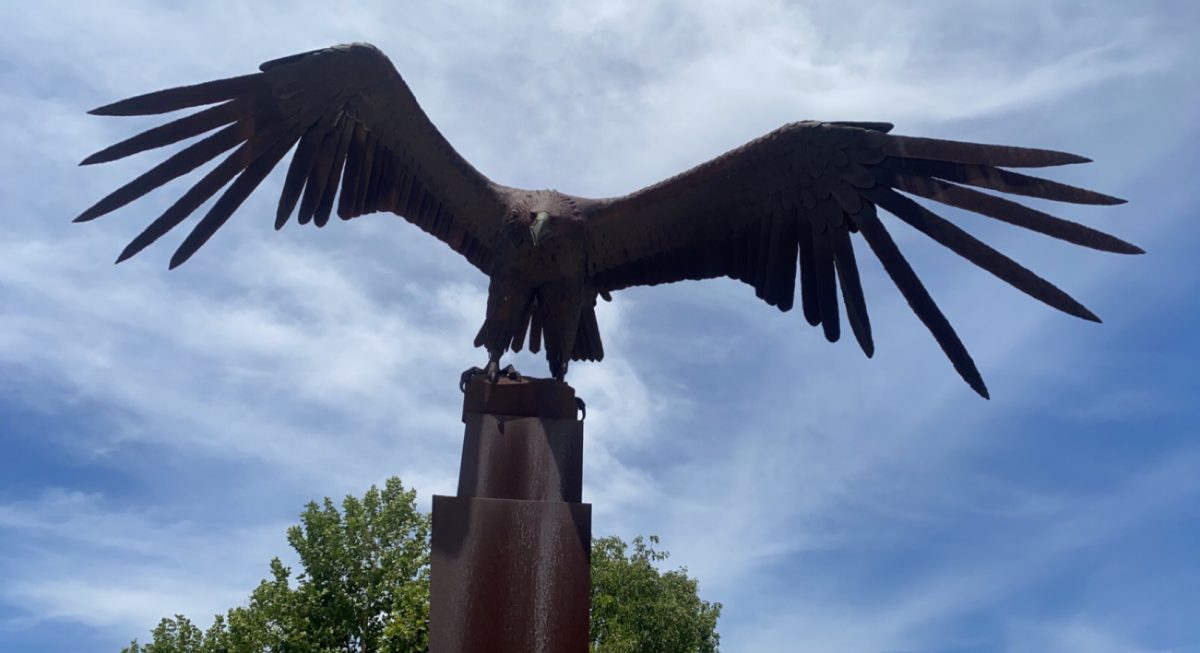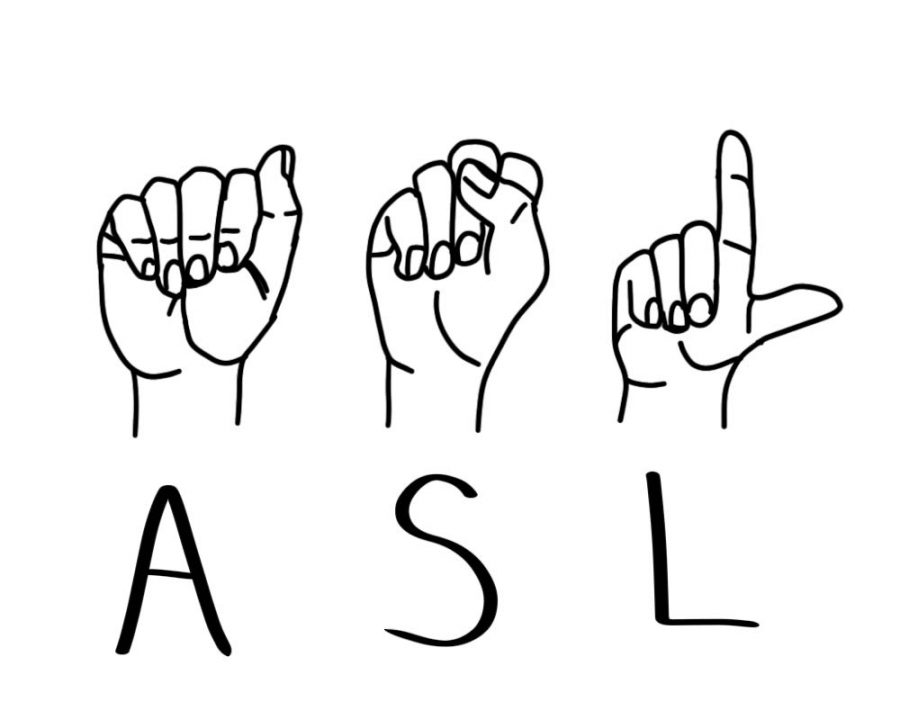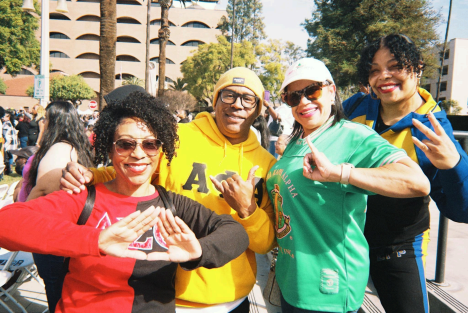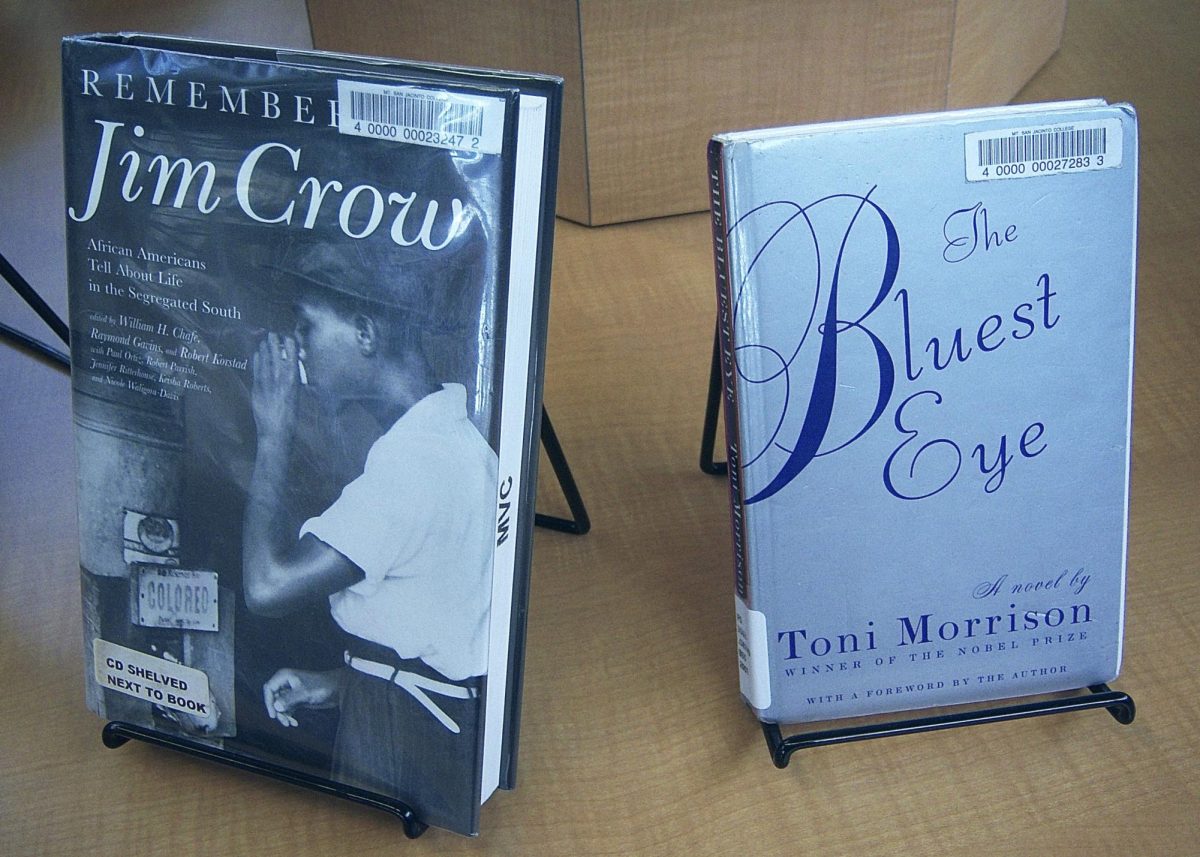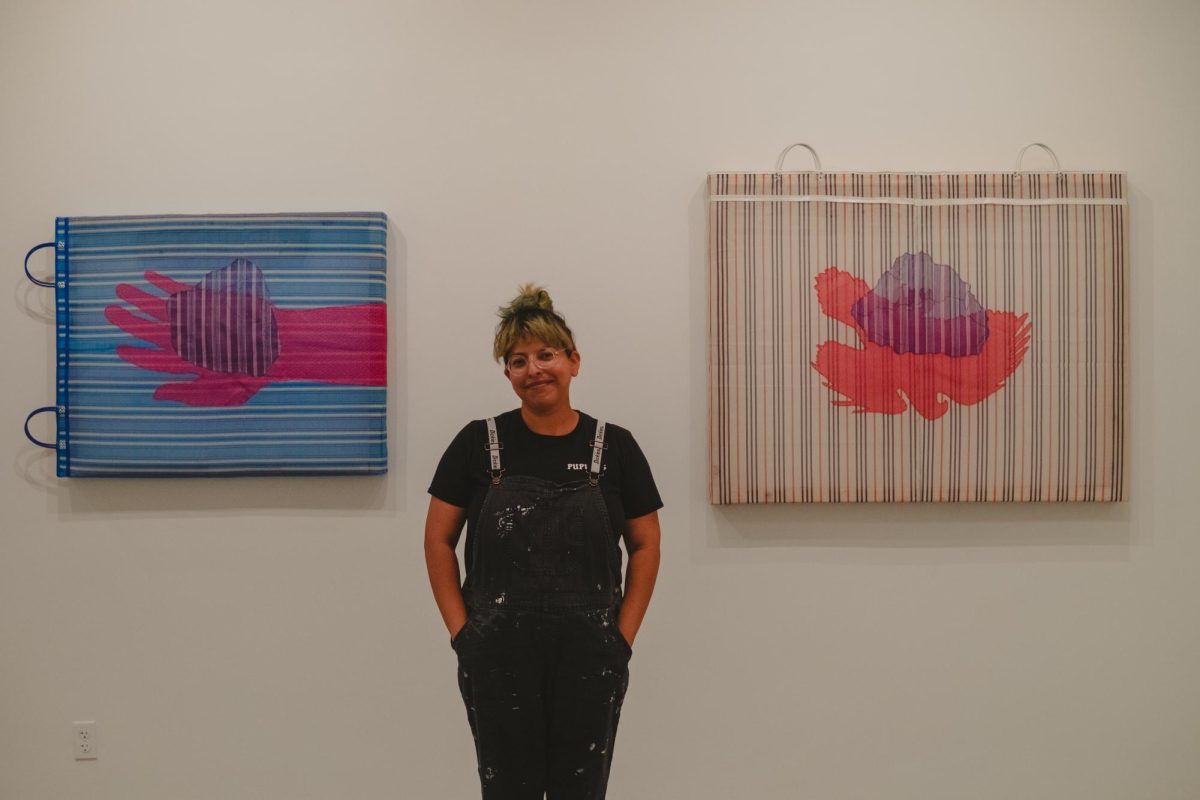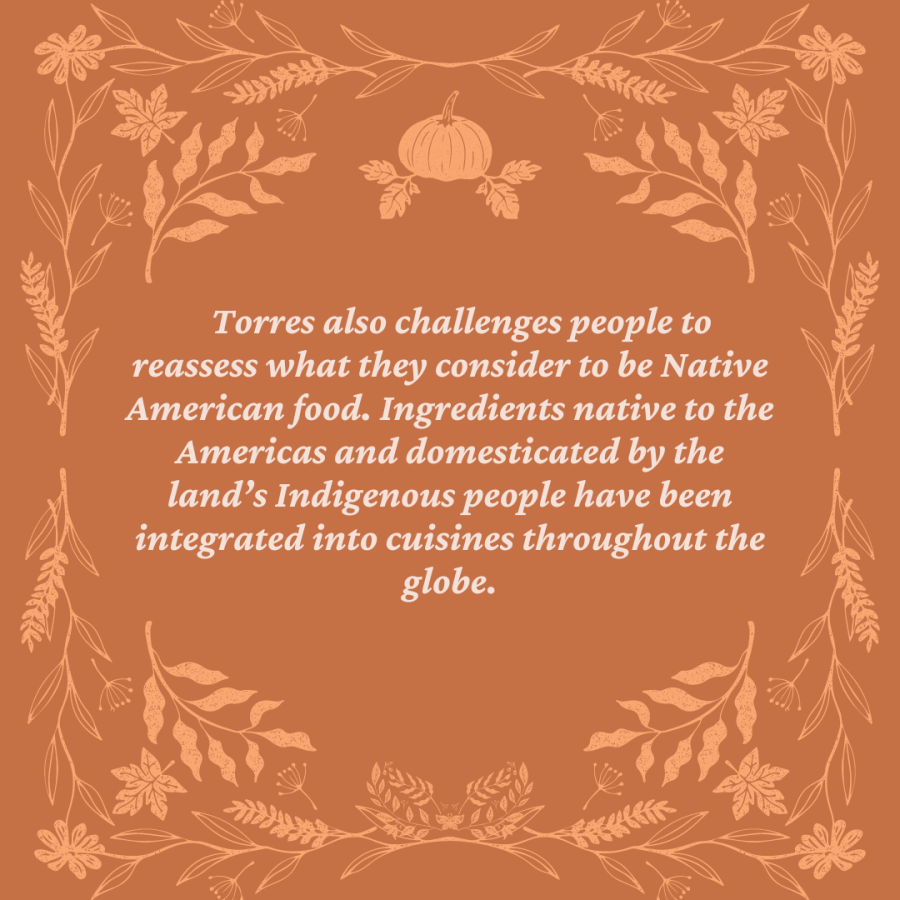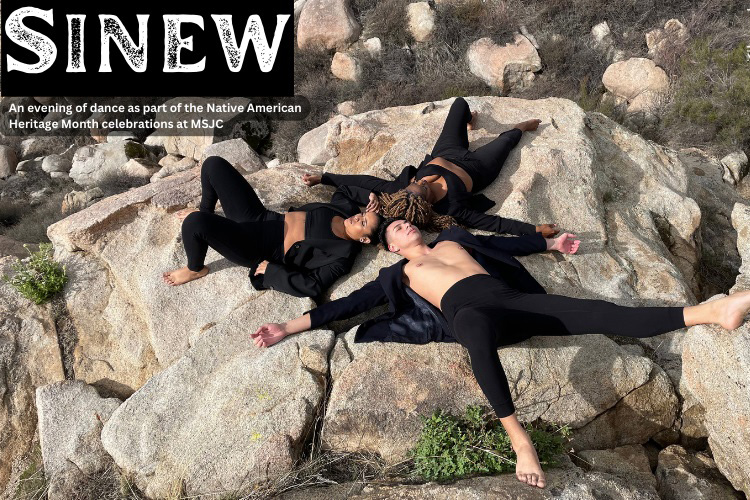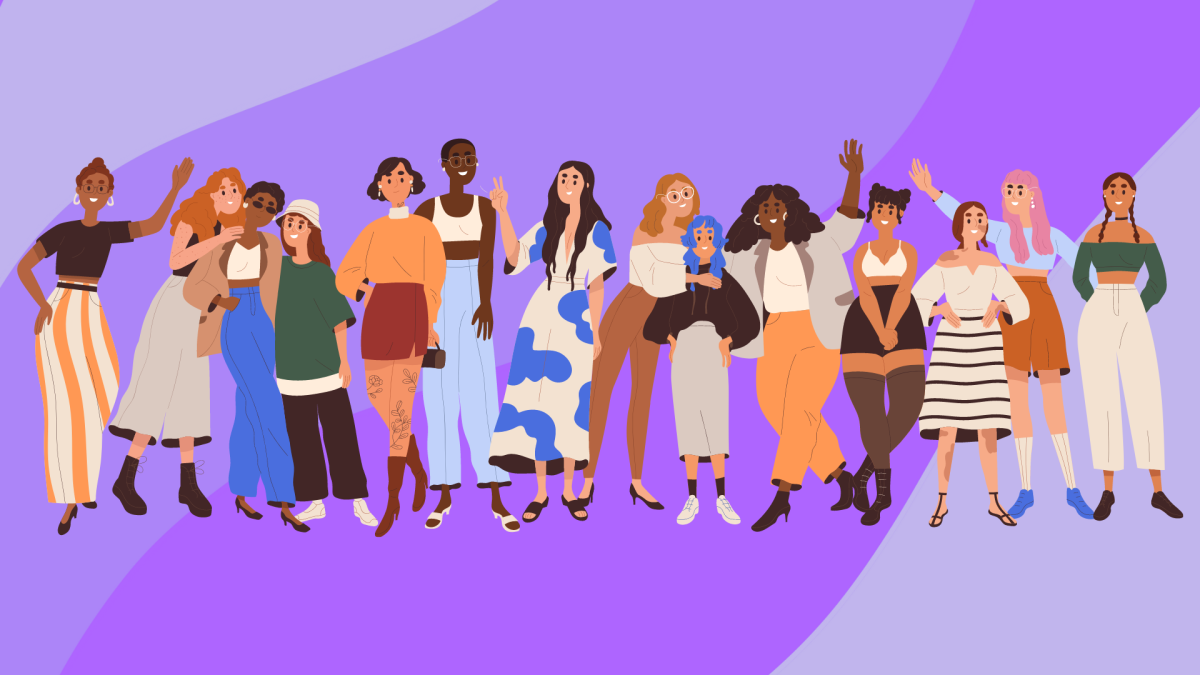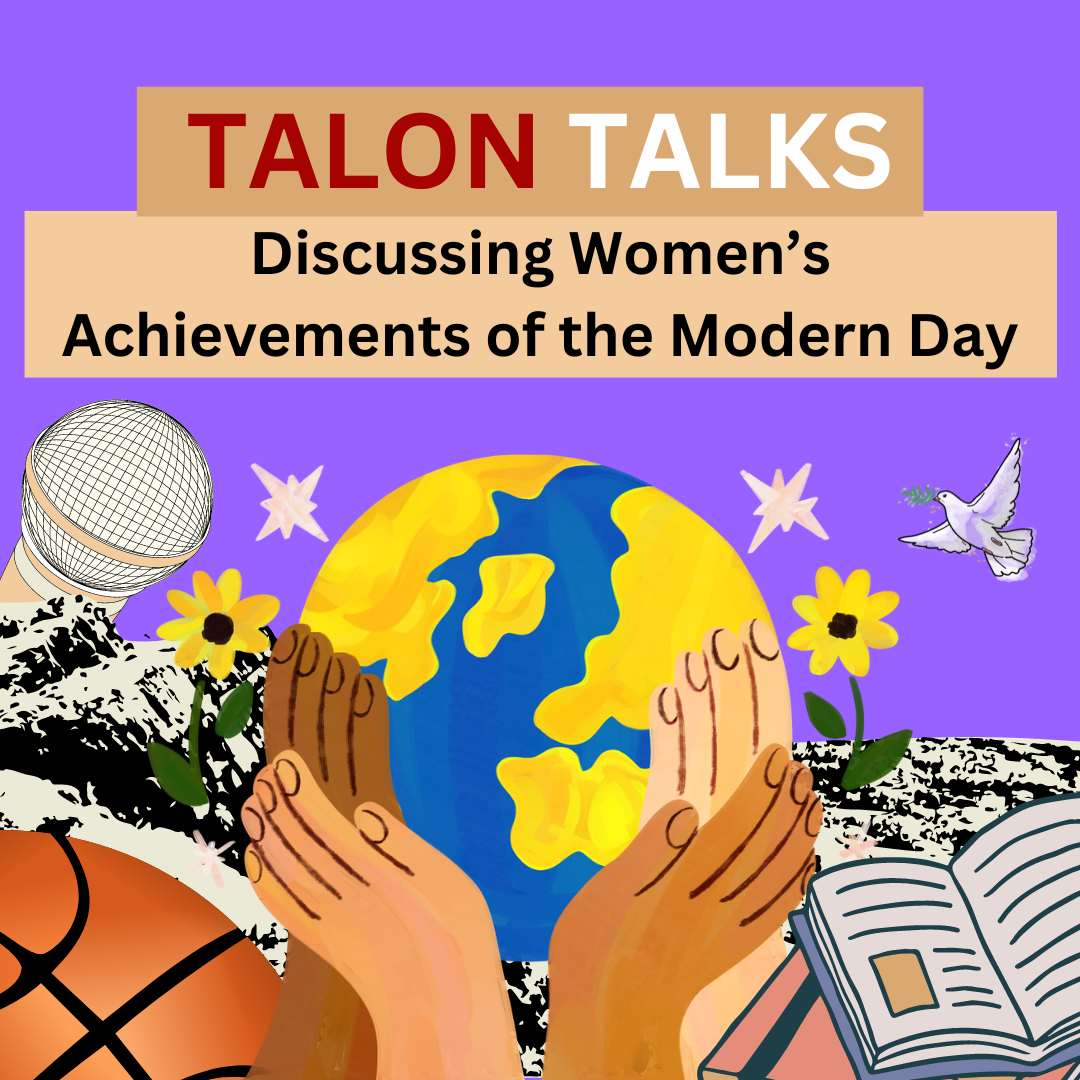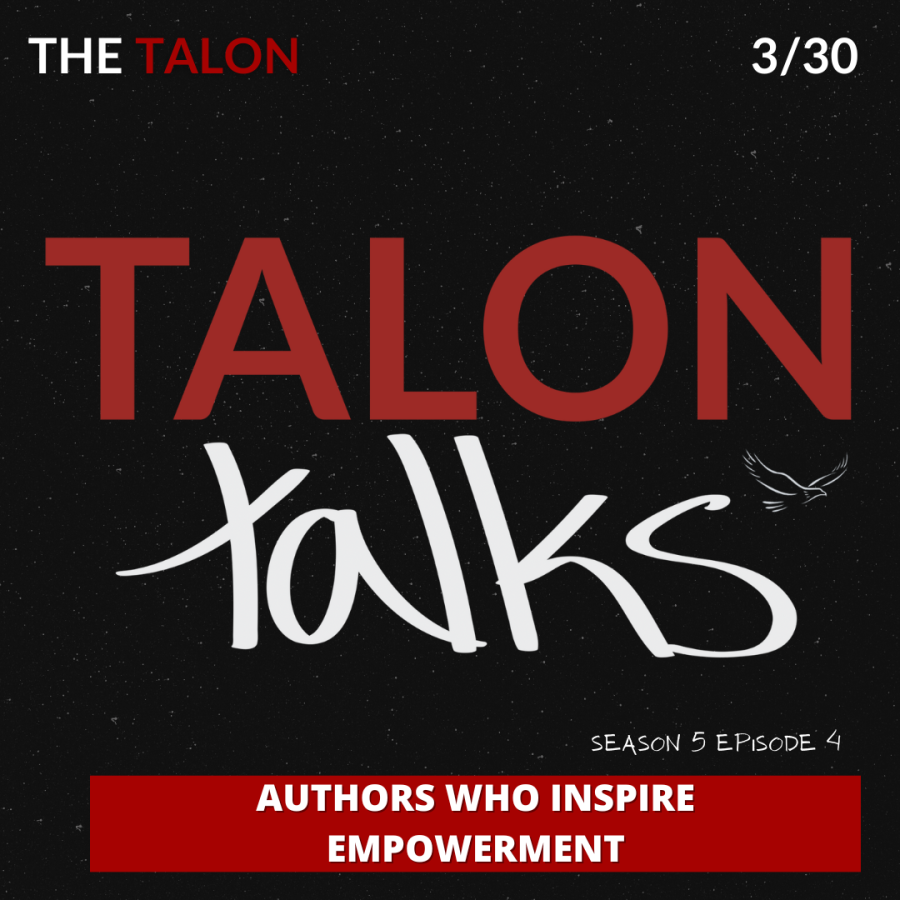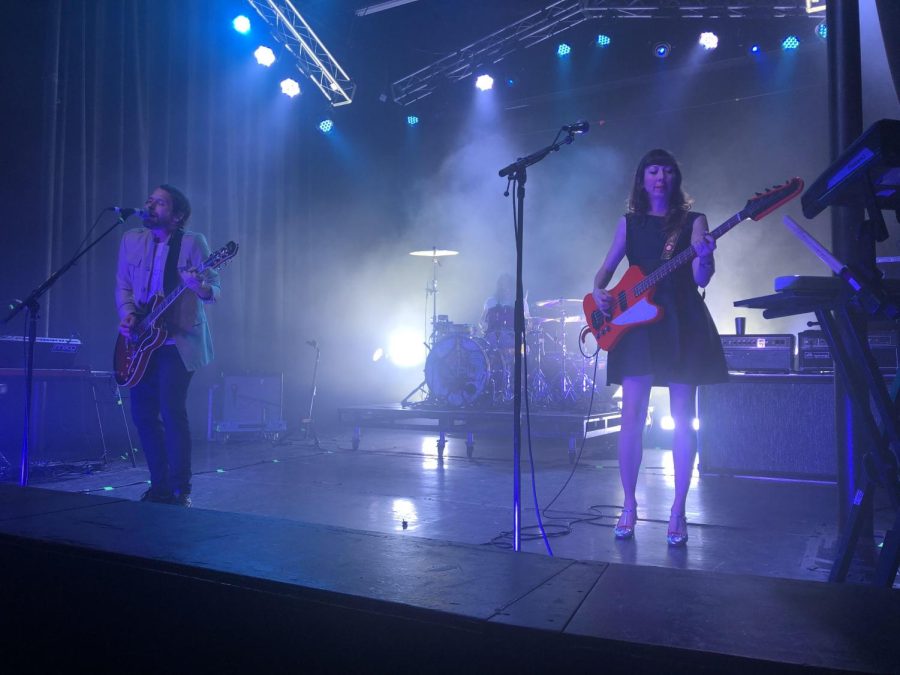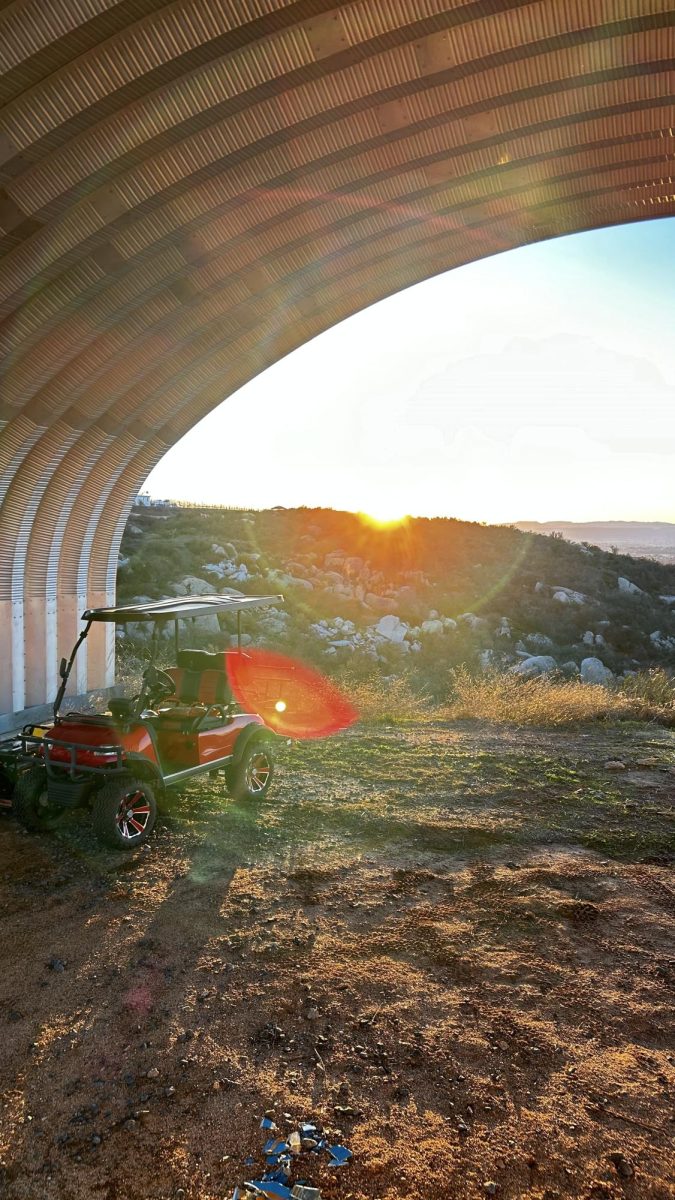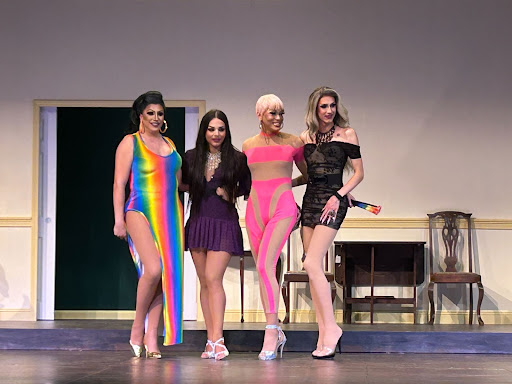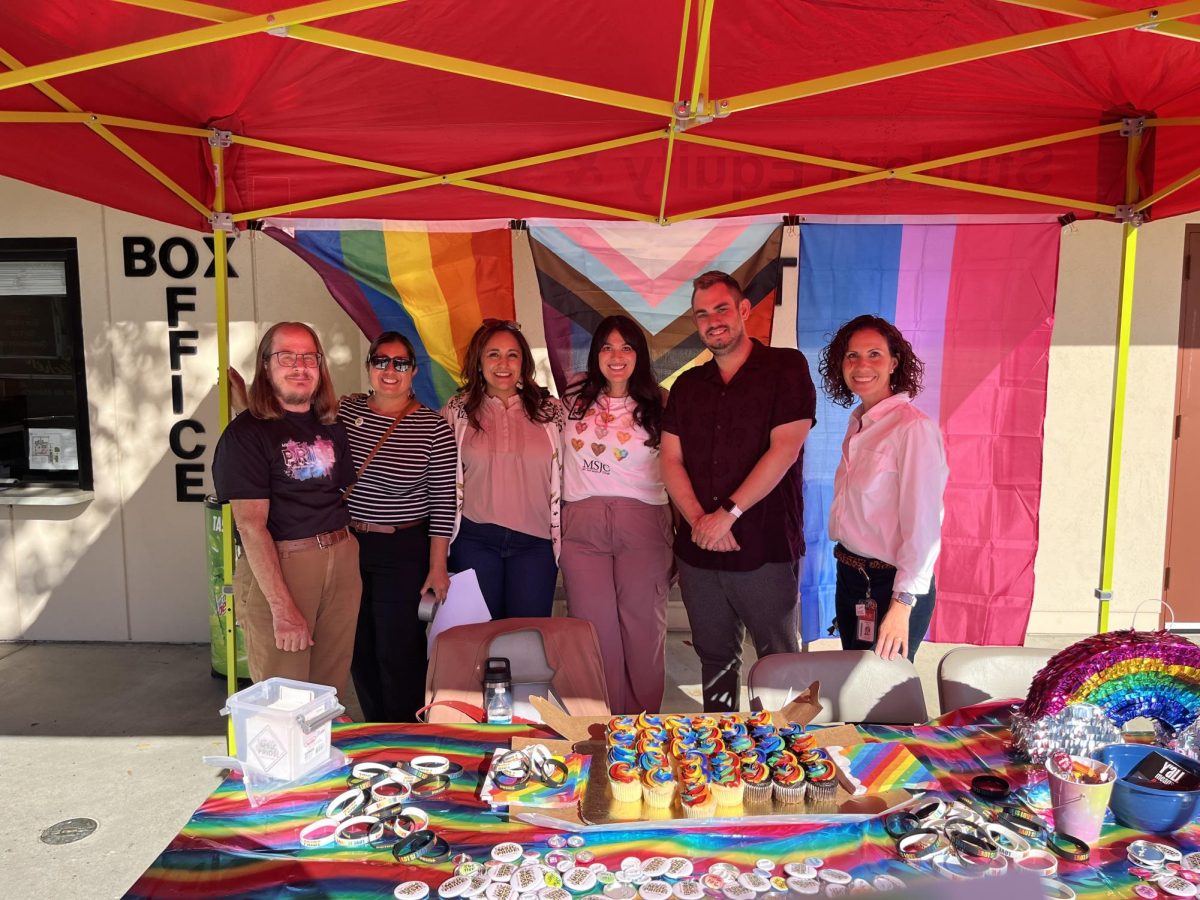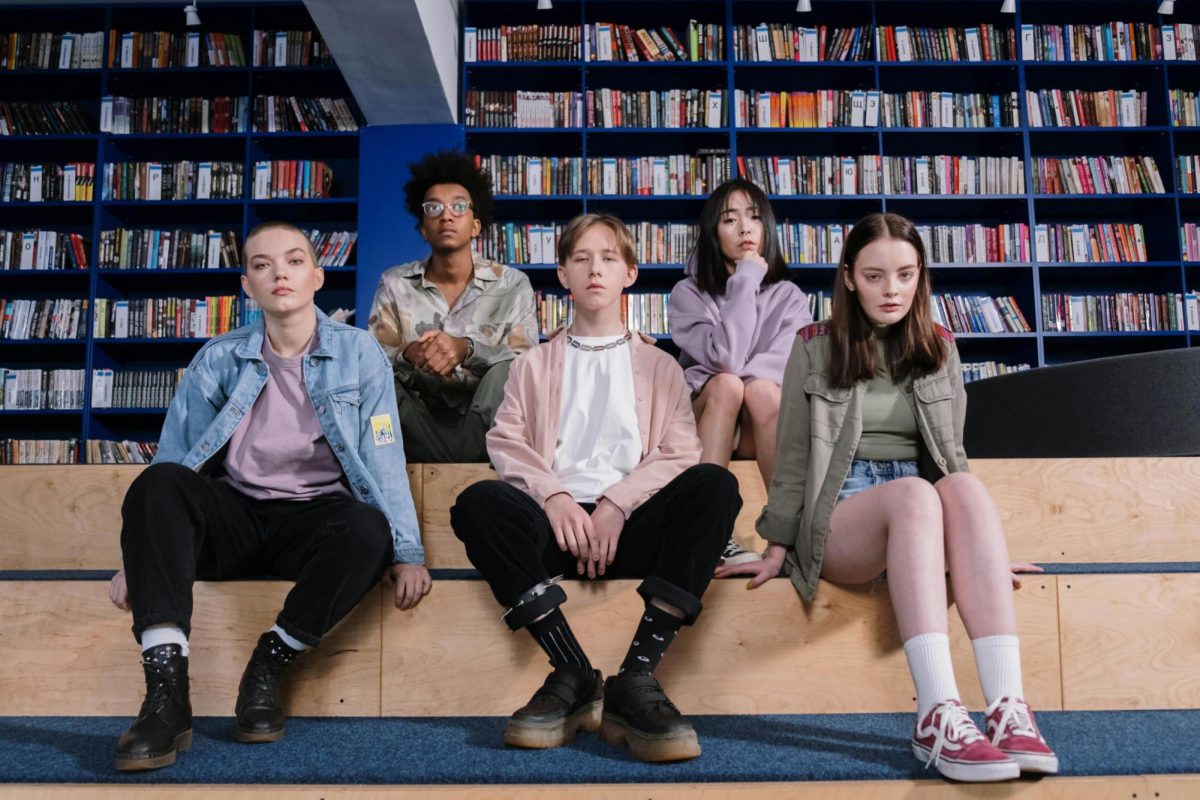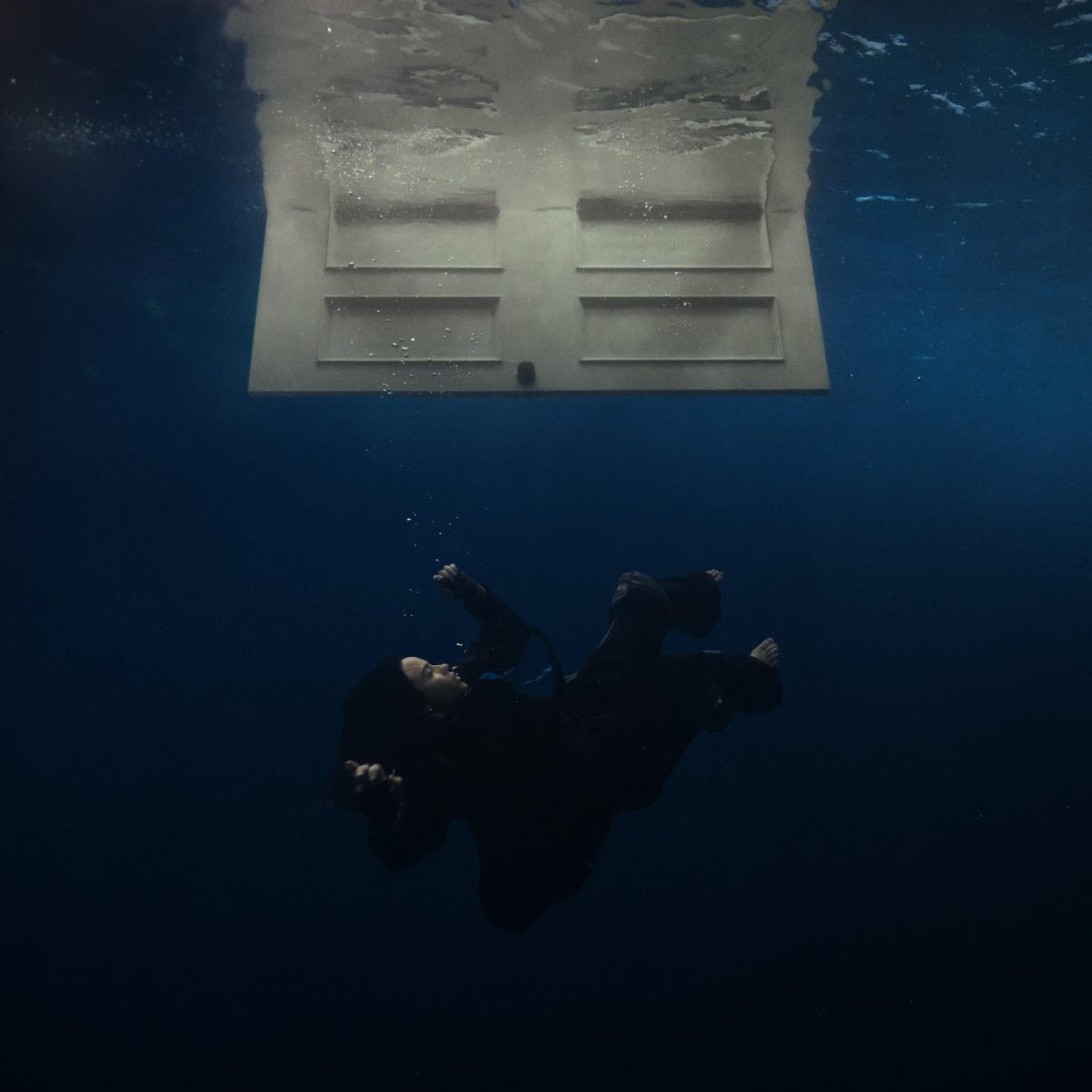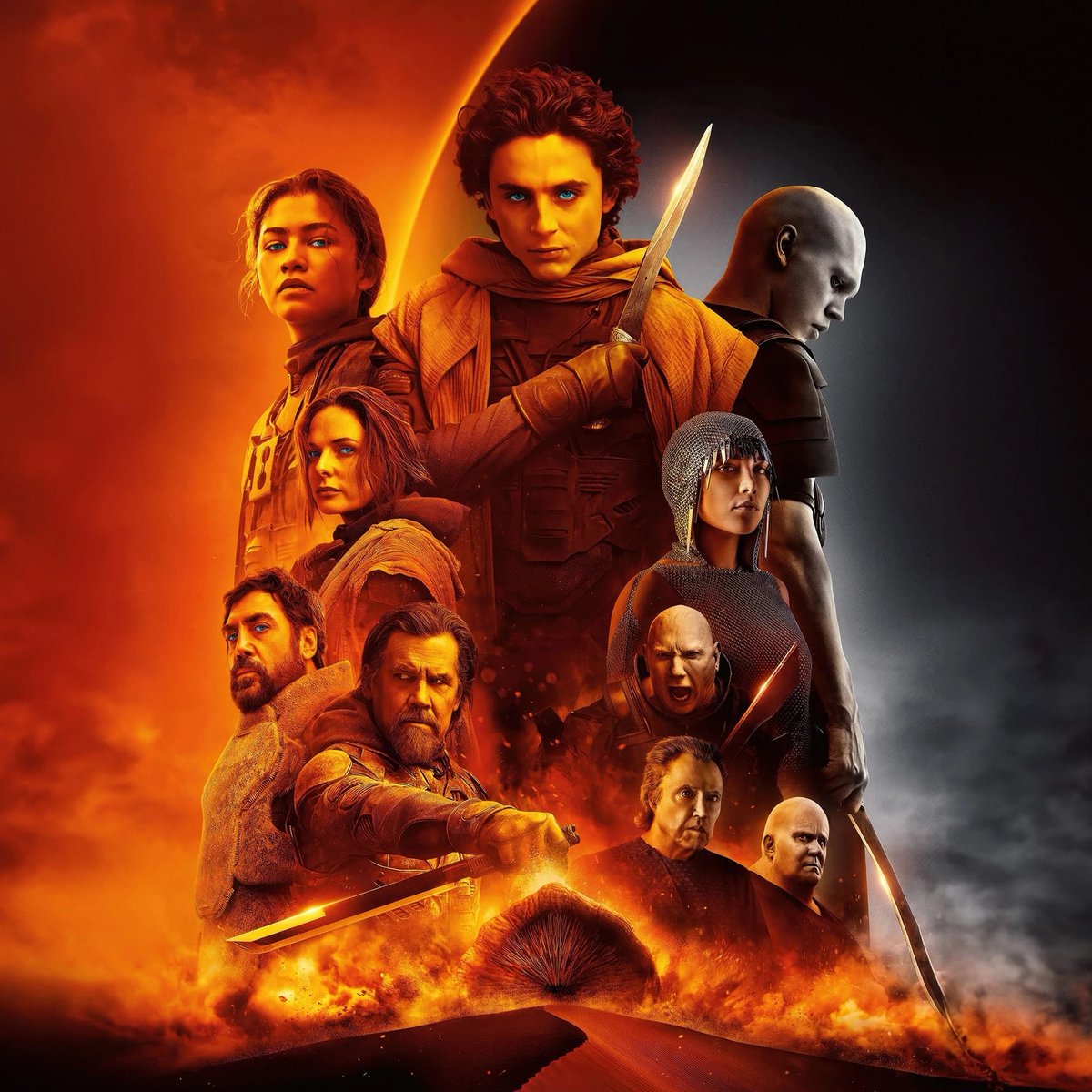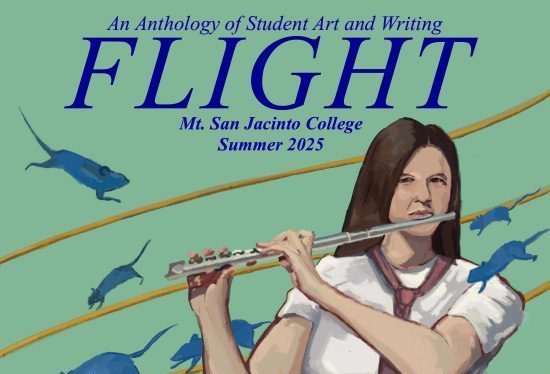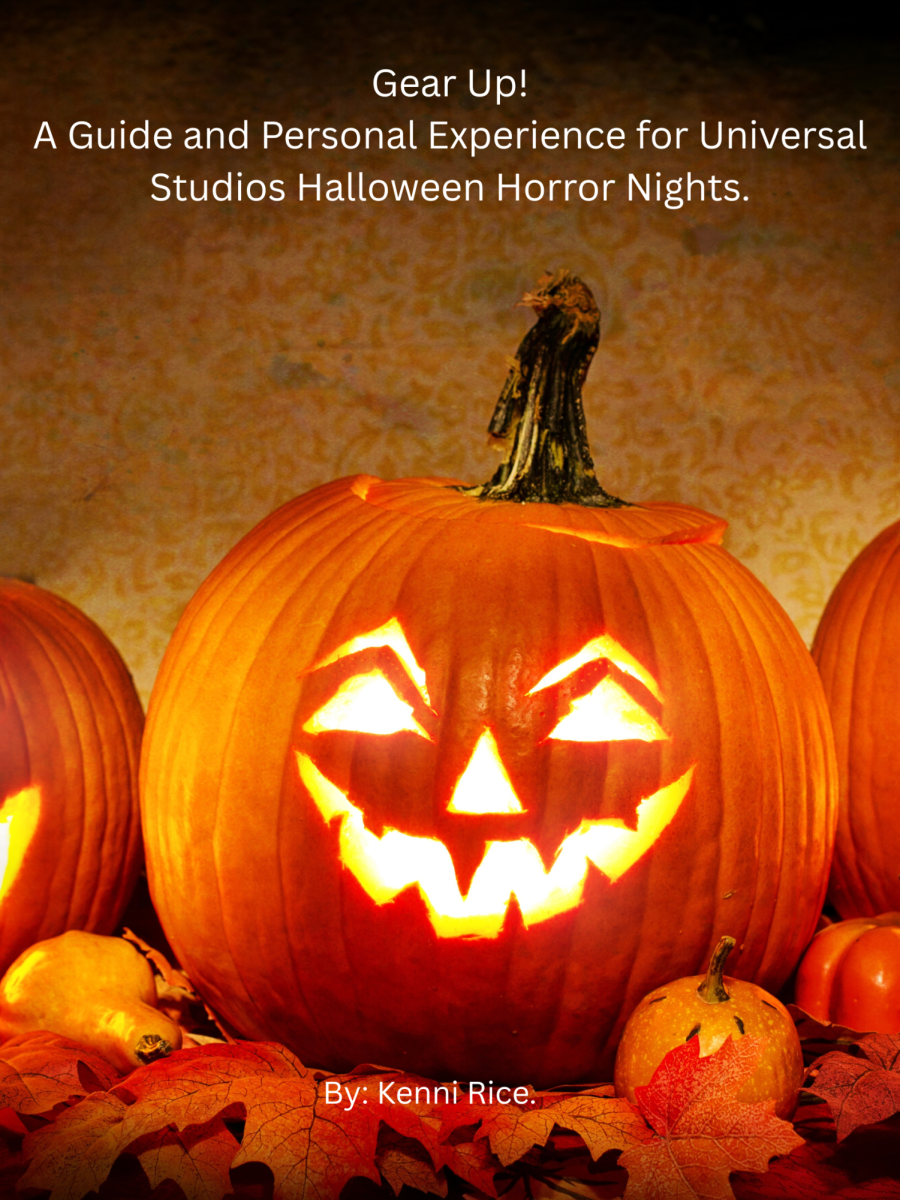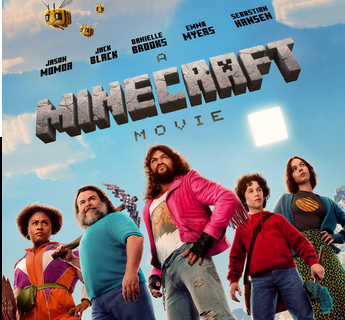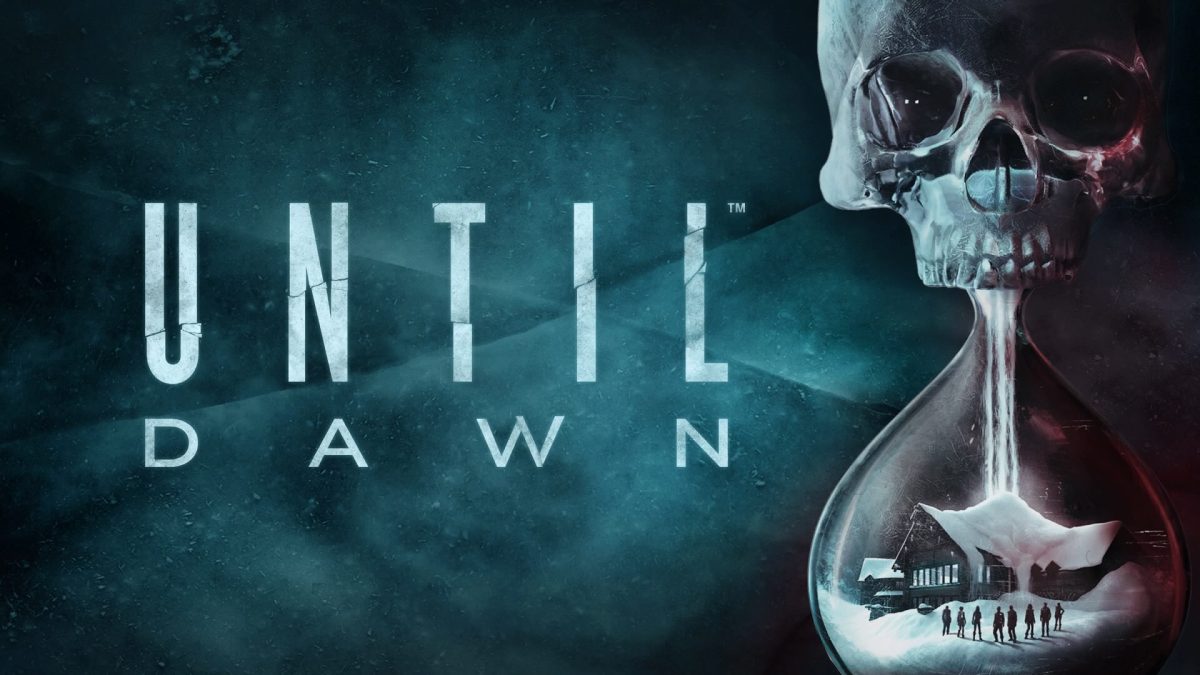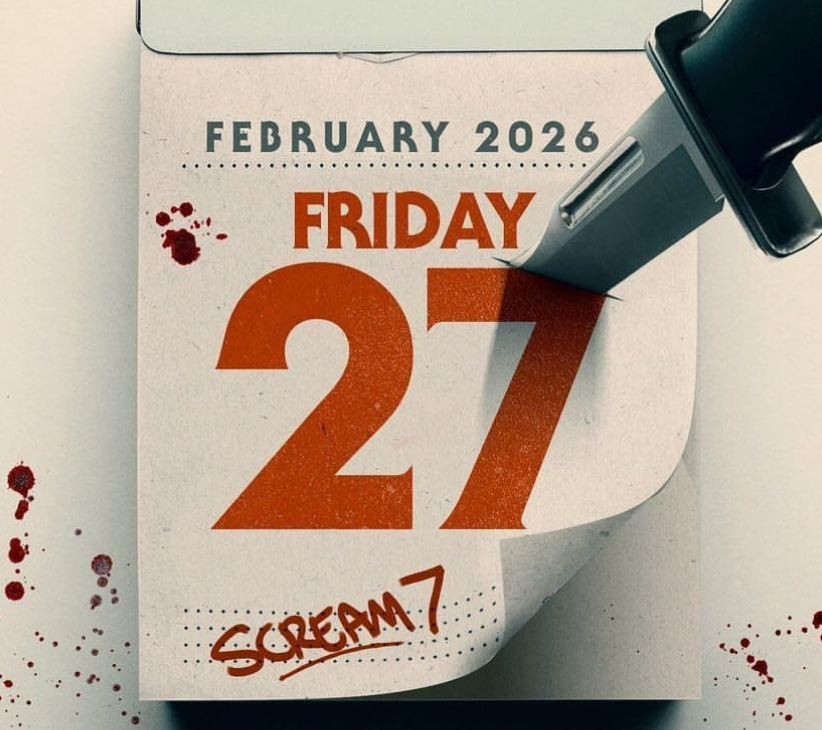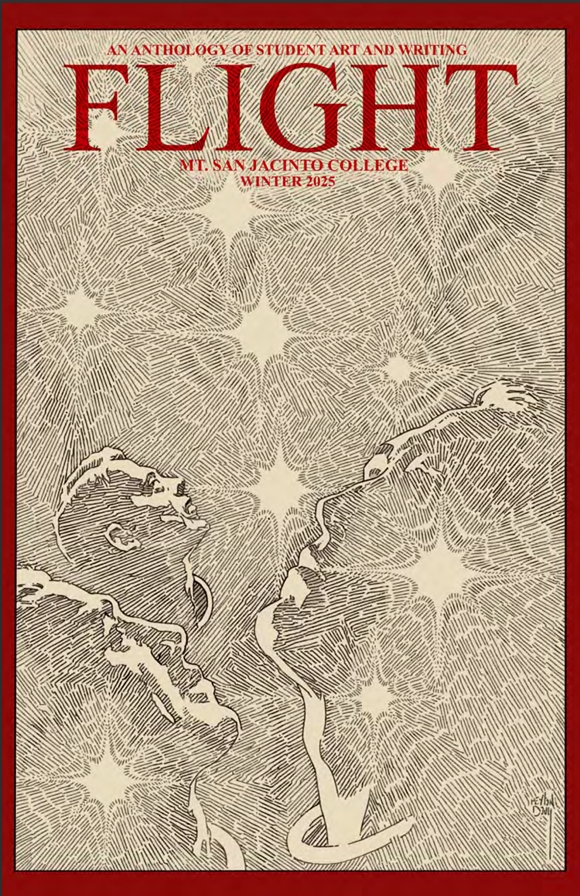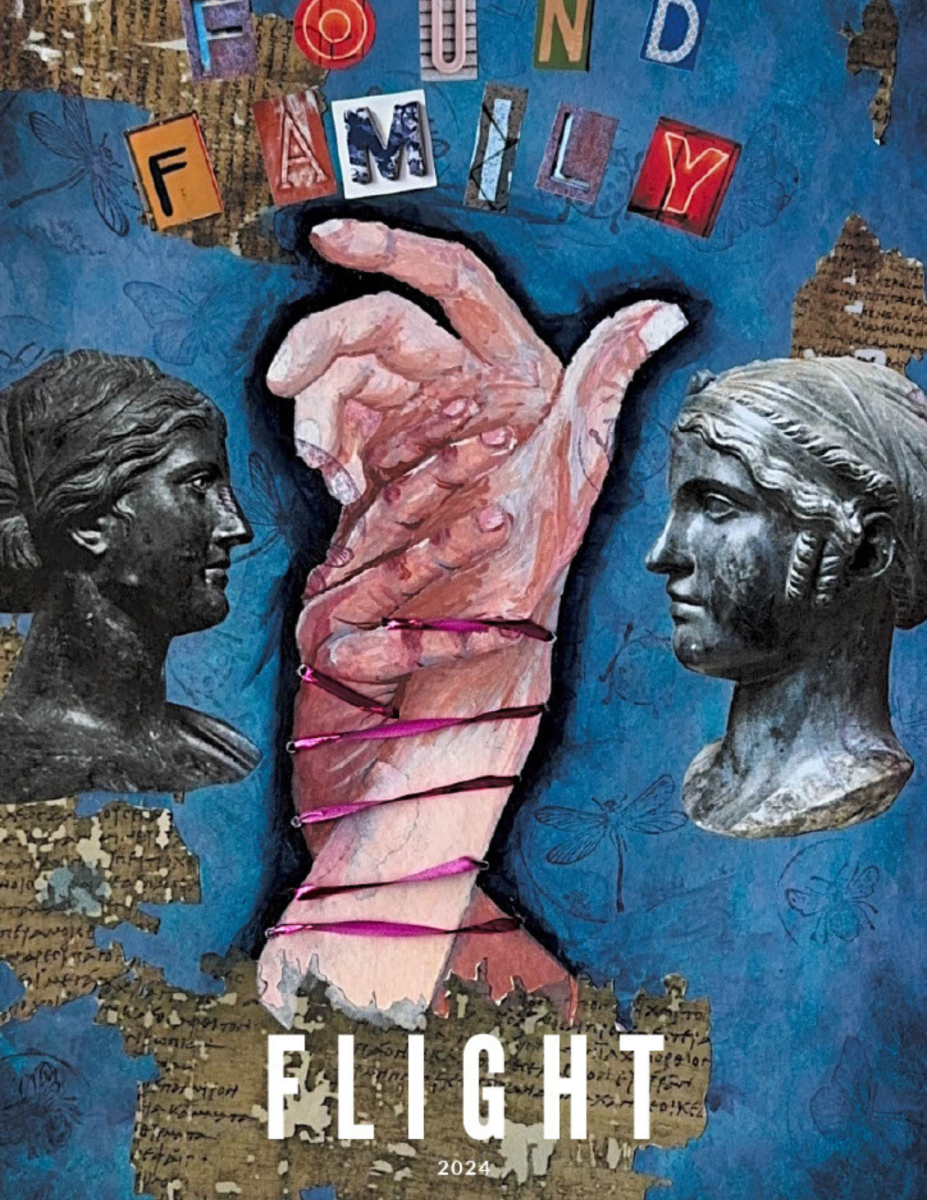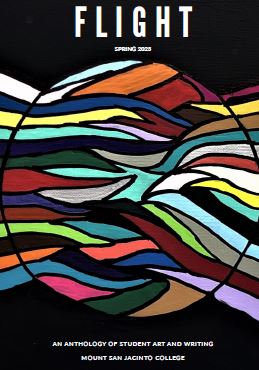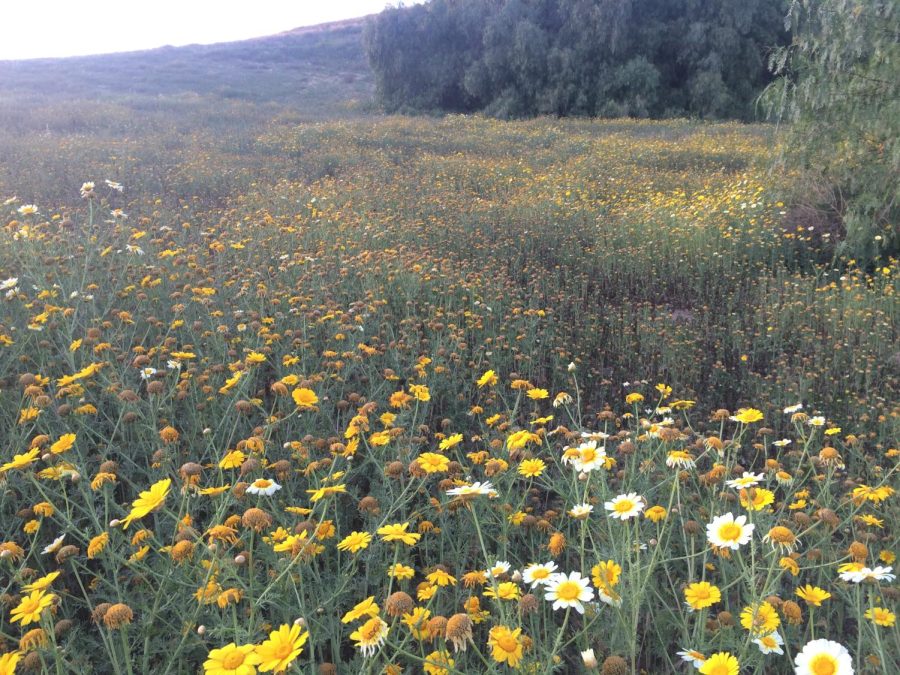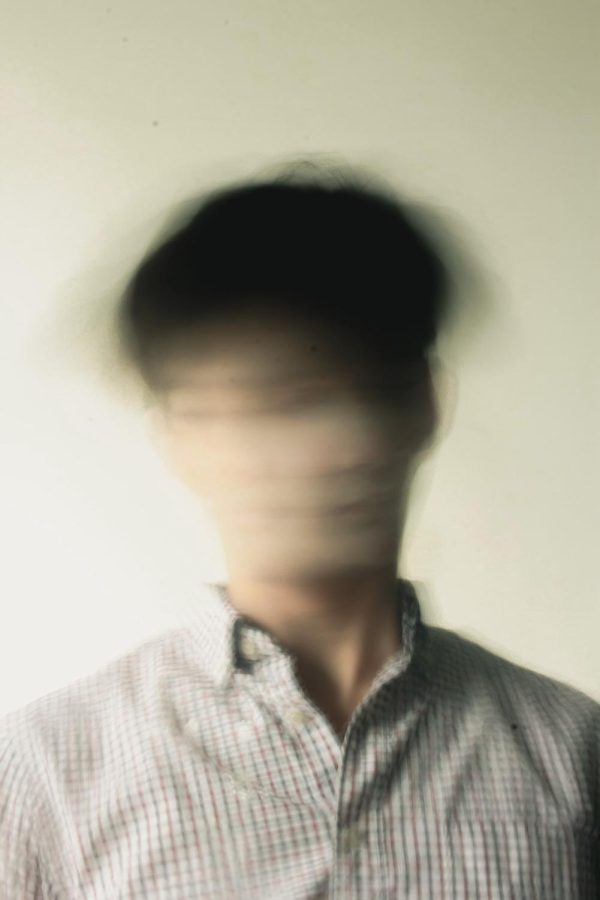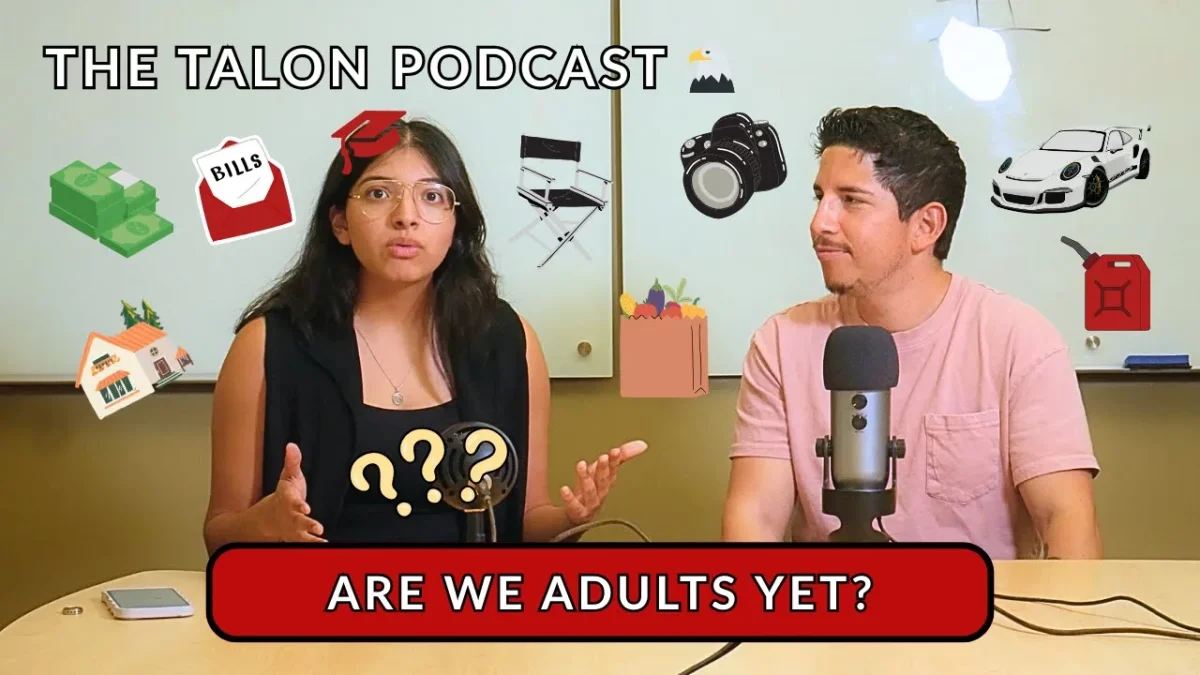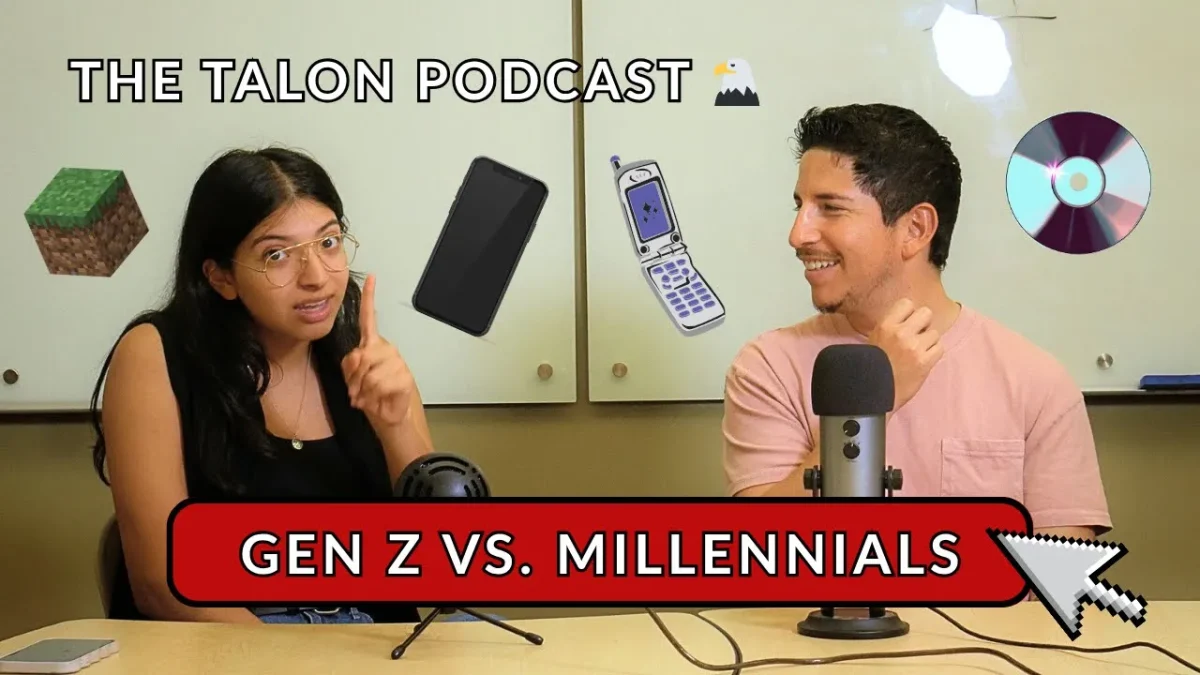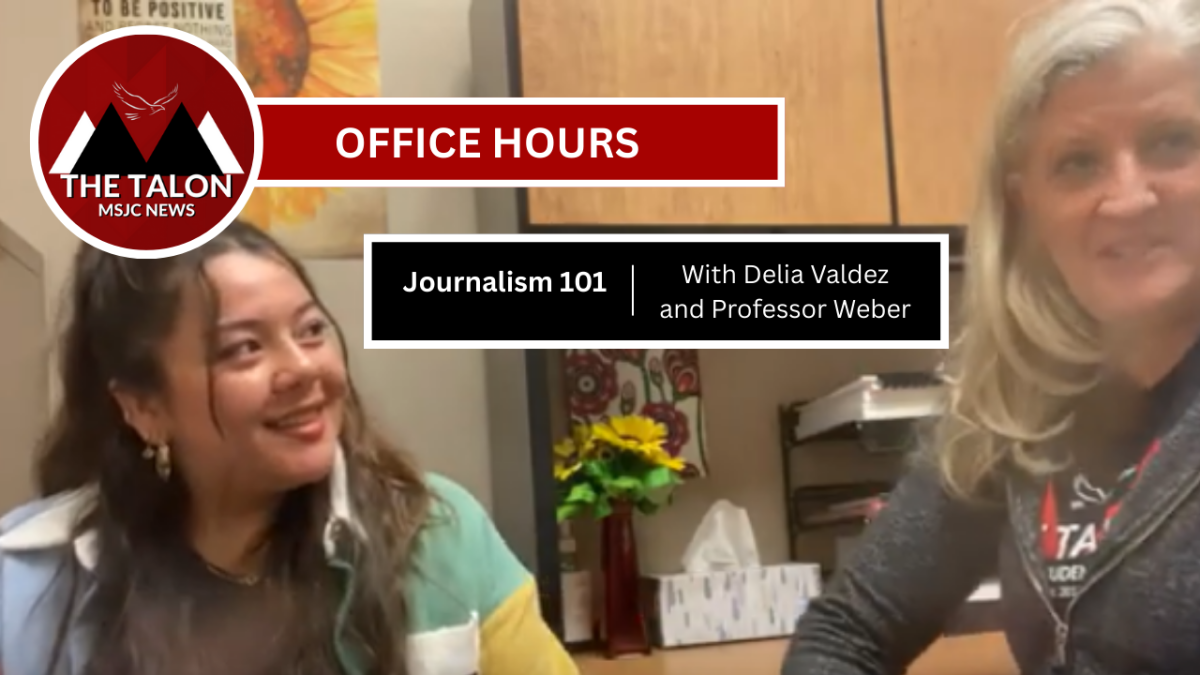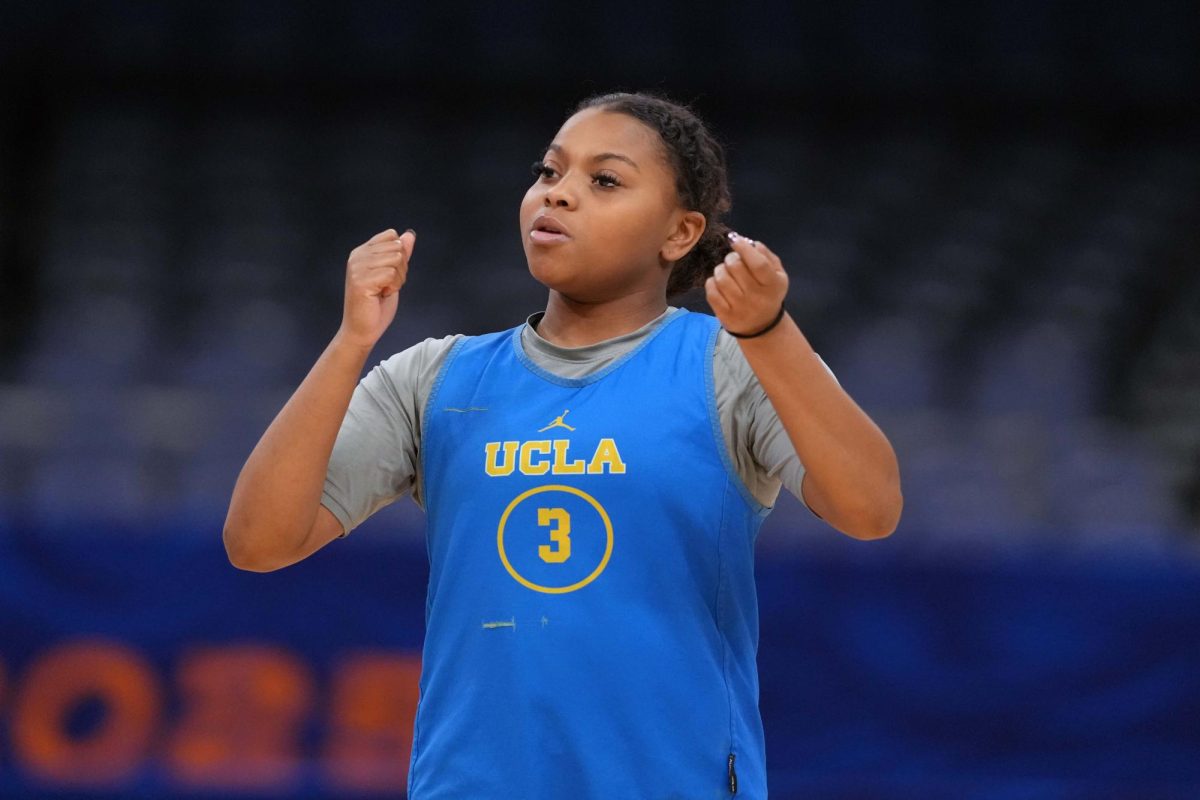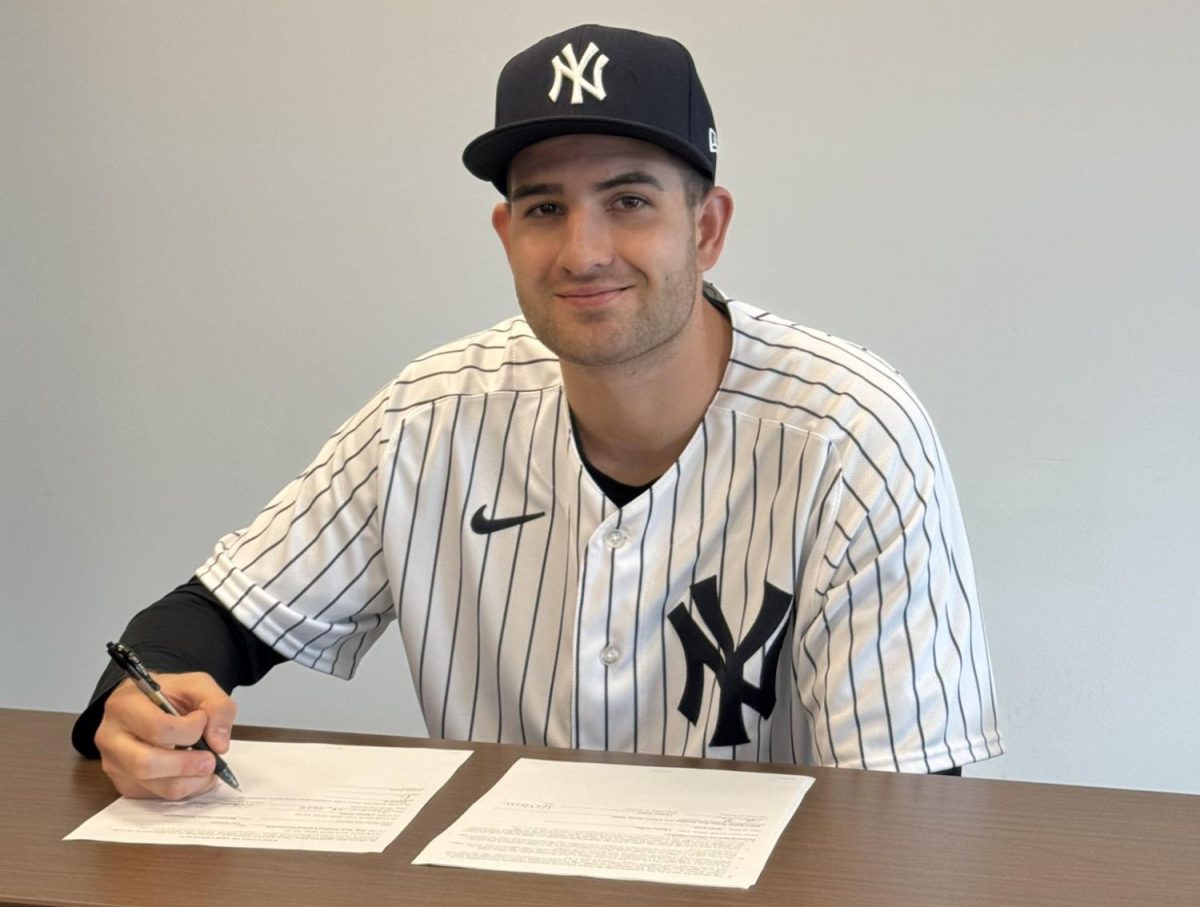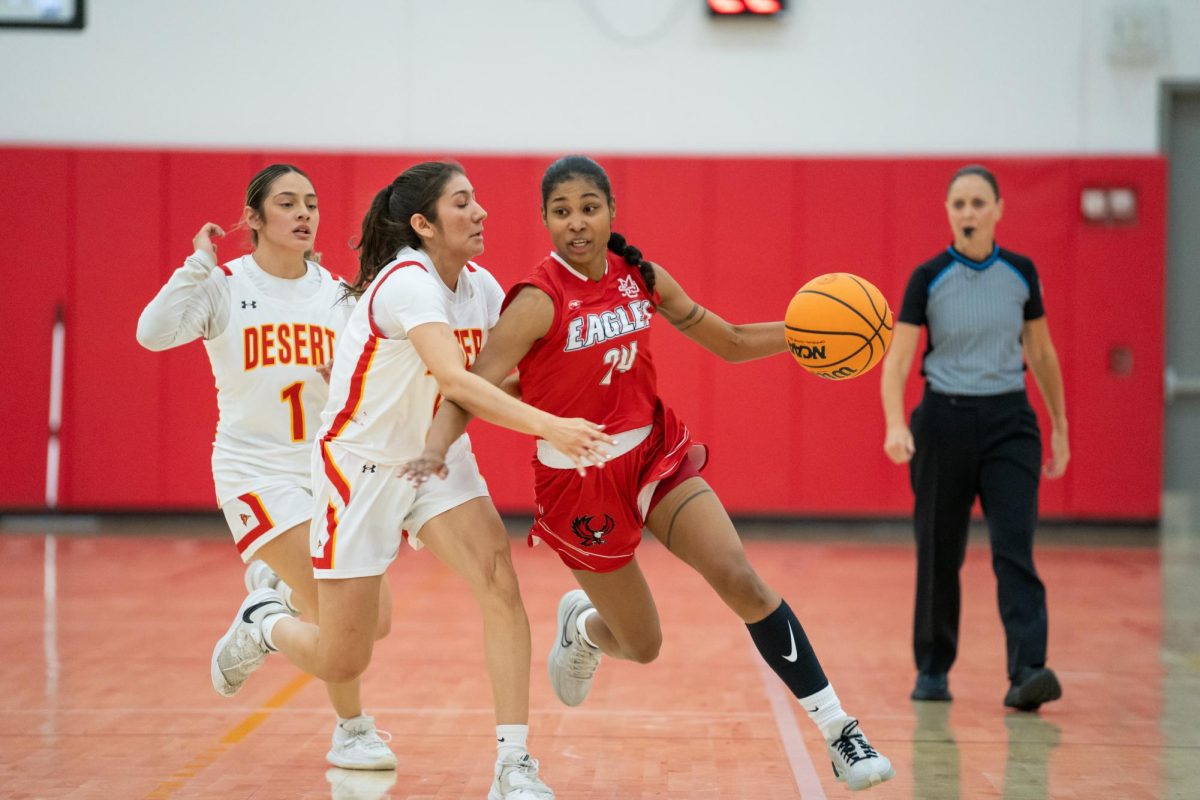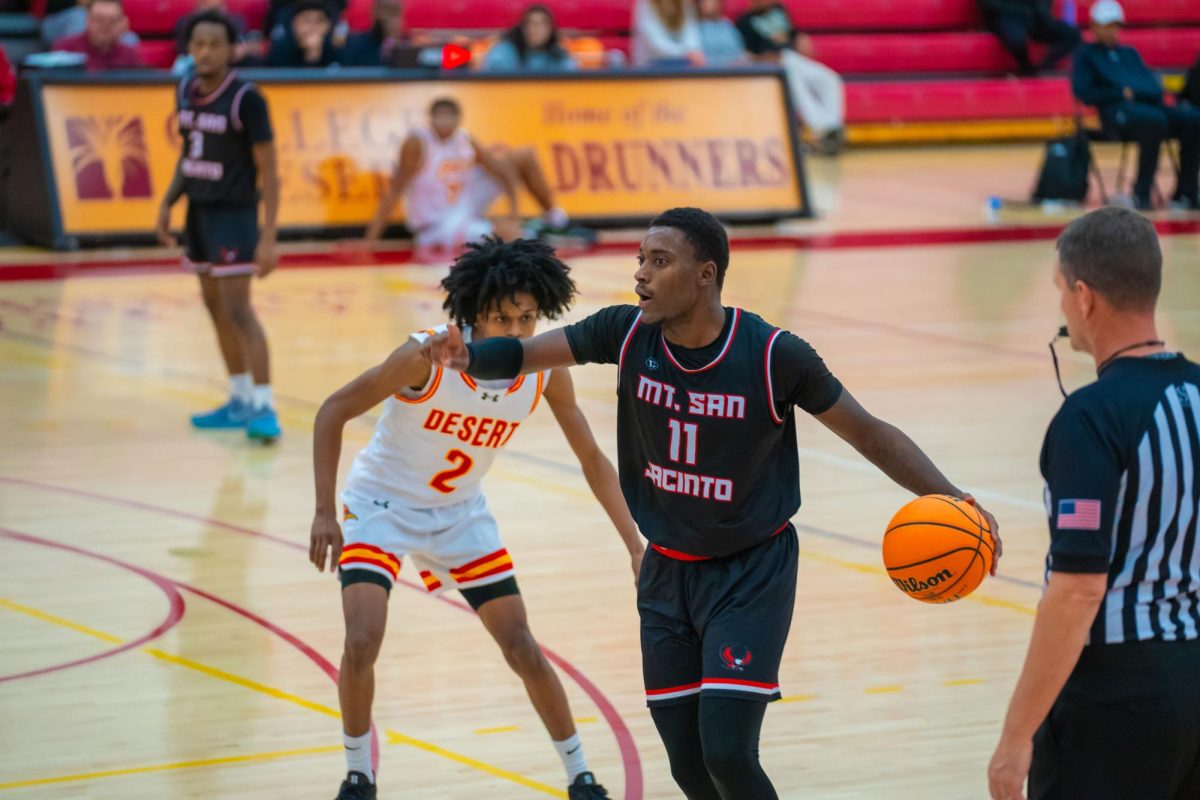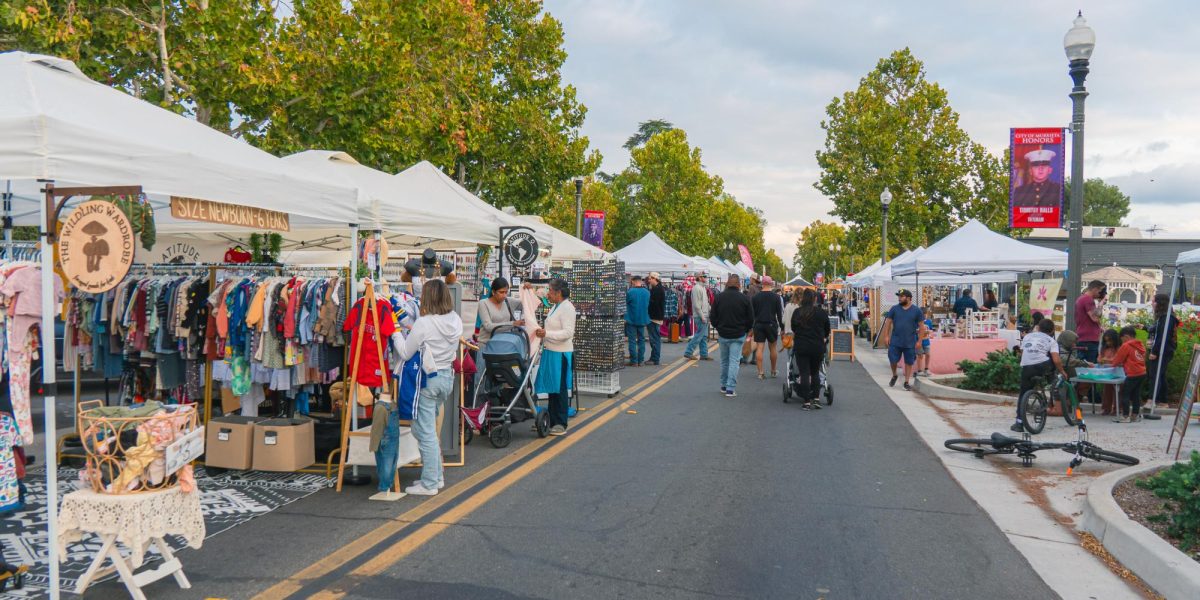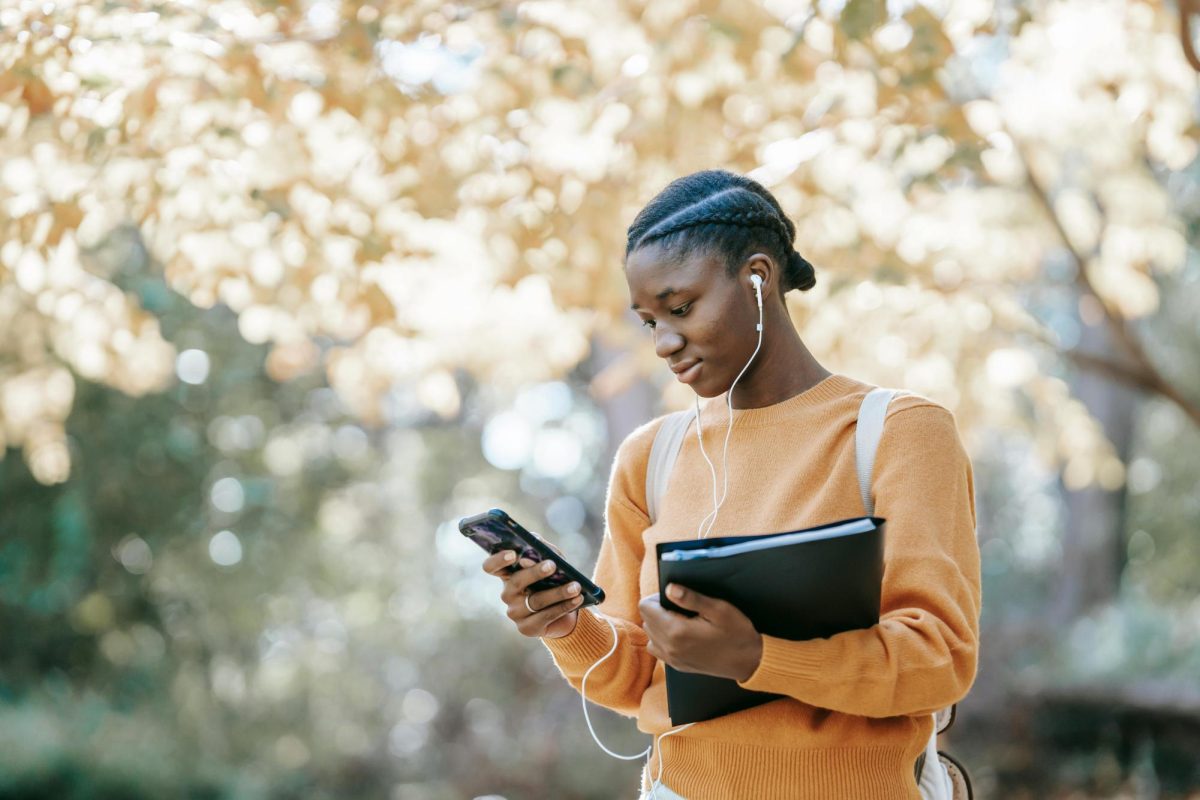APPLE VALLEY, Calif. People of all kinds gathered together on Sunday, April 13, 2025, to celebrate the one-year anniversary of the Southern California music zine Strange Encounters and, more importantly, to experience local music as a community. The lineup combined energetic alternative rock bands such as All Hollow, Thommys Party, and Saint Claire.
The show was one of many, as people all around the High Desert attend local shows nearly every weekend. The High Desert has maintained one of the most tight-knit and communal music scenes in Southern California, encompassing genres from hardcore to punk to emo to indie and alternative rock. Teenagers and young adults make up a significant portion of both the audience and performers, showing that the DIY ethos is alive and well in the desert. With limited access to traditional venues, many High Desert artists have turned to unconventional spaces, backyards, thrift stores, and even abandoned lots to host their shows.
In recent years, concern has grown over the lack of “third places” for people to socialize and whether the internet is making people less social. As people search for connection, communities such as San Jacinto and Hemet could benefit from fostering music scenes similar to the High Desert.
Andy Bennett, a musicologist at Griffith University, described music scenes as “clusters of musicians, promoters, and fans who grow up around particular genres of music.” Some would argue they’re even more than that. Studies have found that live music reduces stress hormones and triggers the release of endorphins that relieve pain. Additionally, live music elicits a stronger emotional response than recorded music and fosters a deeper connection between artist and listener. Local music scenes share these benefits on an intimate level that strengthens community bonds.
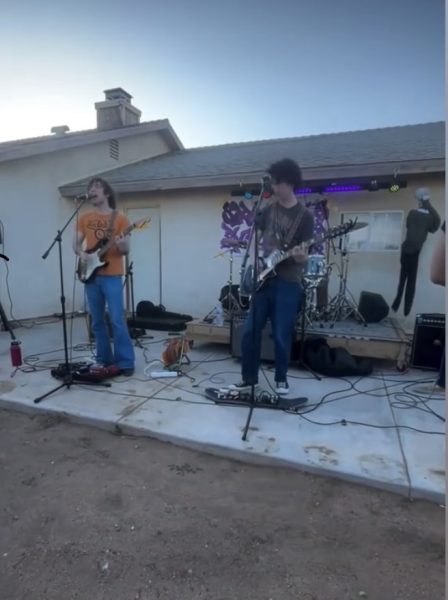
Aiden Herreick, guitarist for Apple Valley alternative rock band All Hollow, which has built a strong following since its 2021 debut single “Nasty Place” and helped host the April 13 show, spoke about his experience in the scene.
“I discovered the local music scene through a friend from high school who was playing in a band at the time,” he said. “It was a super cool show in the alley of a record shop with a bunch of good bands, people, and a good first real music experience.”
Since then, Herreick explained how his experience has remained positive, “I think it [the Music Scene] 100% has changed my life,” he said. “It’s hard to think of where I’d be without it. Yes, anyone can make music, but the High Desert music scene is different from any other town. It’s really close-knit~ everyone knows each other and supports the bands that come into town.”
Thomas Bateman, frontman of Apple Valley alternative rock act Thommys Party, which has grown due to its use of an original film played during performances that helps tell a story through music and imagery, had a similar introduction to the scene.
“I discovered the music scene through a friend from my first band,” Bateman said. “We were making bedroom/indie rock at the time, and the majority of the scene up here was hardcore/punk. They accepted us with open arms despite the difference in genre and helped us find our audience here.”
“Some of my most important friendships were established as a result of going to shows and playing shows,” he added. “The scene has provided me a space to develop who I am and to do what I love most- to make and play music.”
Both Bateman and Herreick had advice for musicians looking to get involved in a local scene.
“Reach out to people,” Bateman said. “The worst thing anyone can say is no. I usually connect with people through Instagram DMs. I’ve had incredible opportunities just by reaching out to musicians I wanted to work with. And if you don’t have an existing scene, reach out to bands nearby and set some shows up yourself.”
Herreick offered additional advice.
“Write seven solid songs that you like and practice the hell out of them,” he said. “It’s hard starting out, but you’ll get the hang of songwriting. You just have to try different things and find out if you write better alone or in a group. Knowing more than one instrument helps a lot if you work better alone and want to write something and teach it to your bandmates.”
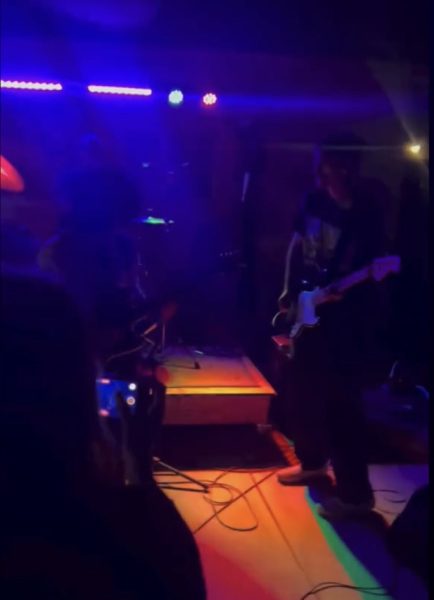
Cameron Mcallister, from Alternative Rock trio Saint Claire, shared similar advice with us, “I would say the best way to start is to just go for it. Start writing and start getting a band together. Don’t wait to start playing shows, because the faster you do, the faster you learn what you need to improve on.”
Still, it takes more than musicians to create a thriving scene. Publicist Elizabeth Cawain explained in a TED Talk that building a music scene requires a city that values its artists, and an engaged audience that supports them.
“There are so many moving parts in the music scene,” Herreick said. “Yeah, bands are important, but we’d be nowhere without promoters, cameramen, videographers, vendors, and all the other people who help out. Even if you aren’t a musician, there’s a place for you in the music scene.”
Safety is also essential when fostering a music scene, Bateman said.
“Every creative scene needs to be safe for the people who are a part of it in order for it to function,” he said. “Everyone is responsible for holding themselves and others accountable to ensure that it can continue to exist.
“This year, we had one of the only all-ages spaces in our area permanently stop hosting shows as the result of a single person’s actions. Because a couple people chose not to speak up to stop them, our scene as a whole took a massive blow. Respect for the spaces you are in and for the people around you is absolutely crucial to the development of a healthy community. Please recognize the importance of the work being done and show up for your scene.”
Allister explained further, “Everyone should treat the scene with respect, since all scenes exist with some fragility.”
As the music scene in the High Desert grows, it serves as a reminder of the strength of local music scenes and the communities they foster. While public spaces shrink and online interaction dominates, music scenes offer a rare, physical space where young people can safely express themselves and engage with their community. For those who feel they don’t have a place to belong, joining – or helping create – a music scene could be the first step toward finding one.


